The post Look Back at CNET’s Original iPhone Review first appeared on Joggingvideo.com.
]]>This story is part of Focal Point iPhone 2022, CNET’s collection of news, tips and advice around Apple’s most popular product.
Editors’ note: Fifteen years ago, Kent German reviewed the original iPhone. He stayed up all night to do it, and he had opinions — lots of them. At the time it was clear Apple had broken radical new ground in phone design. Sure, that first model was missing some common phone features, but the interface was far ahead of any other phone at the time. Eventually, Apple caught up with things like photo messaging and 3G, and it countered with innovations of its own. On the 15th anniversary of the iPhone’s birth, let’s take a trip back to what we thought all those years ago.
June 30, 2007
THE GOOD The Apple iPhone has a stunning display, a sleek design and an innovative multitouch user interface. Its Safari browser makes for a superb web surfing experience, and it offers easy-to-use apps. As an iPod, it shines.
THE BAD The Apple iPhone has variable call quality and lacks some basic features found in many cellphones, including stereo Bluetooth support and a faster data network. Integrated memory is stingy for an iPod, and you have to sync the iPhone to manage music content.
THE BOTTOM LINE Despite some important missing features, a slow data network and call quality that doesn’t always deliver, the Apple iPhone sets a new benchmark for an integrated cellphone and MP3 player.
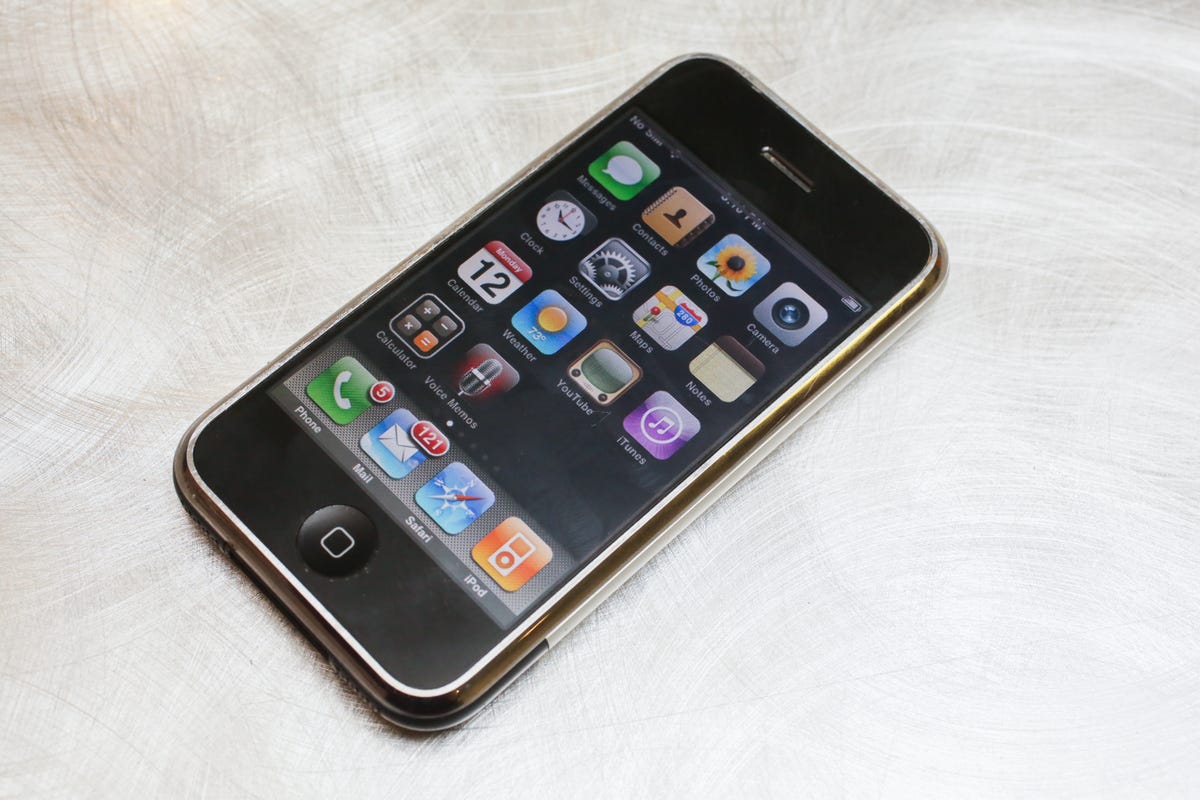

Metal, rounded side and only one color: the original iPhone.
Sarah Tew/CNET
The iPhone’s display is the handset’s design showpiece and is noteworthy for not only what it shows, but also how you use it. From the moment Apple announced its iPhone at Macworld 2007, the tech world hasn’t stopped asking questions. Because Apple has kept many iPhone details under wraps until very recently, we’ve been forced to speculate. Until now. Is the iPhone pretty? Absolutely. Is it easy to use? Certainly. Does it live up to the stratospheric hype? Not so much.
Don’t get us wrong, the iPhone is a lovely device with a sleek interface, top-notch music and video features and innovative design touches. The touchscreen is easier to use than we expected, and the multimedia performs well. But a host of missing features, a dependency on a sluggish EDGE network and variable call quality — it is a phone after all — left us wanting more. For those reasons, the iPhone is noteworthy not for what it does, but how it does it. If you want an iPhone badly, you probably already have one. But if you’re on the fence, we suggest waiting for the second-generation handset. At $599 for the 8GB model and $399 for the 4GB model, it’s a lot to ask for a phone that lacks so many features and locks you into an iPhone-specific two-year contract with AT&T. We’ll be more excited once we see a version with — at the very least — multimedia messaging and 3G.
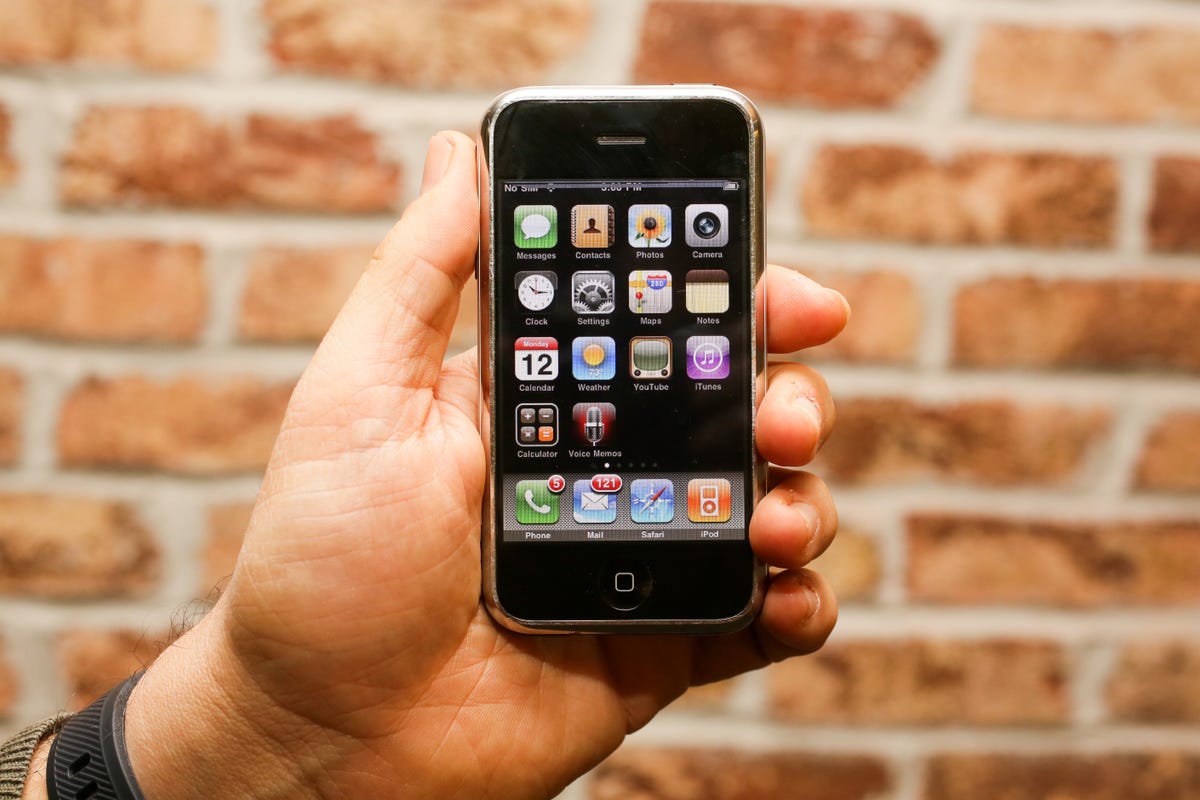

The original “skeuomorphic” iOS design was a world away from the “flat” interface that iOS 7 introduced.
Sarah Tew/CNET
Design
The iPhone boasts a brilliant display, trim profile and clean lines (no external antenna of course), and its lack of buttons puts it in a design class that even the LG Prada and the HTC Touch can’t match. You’ll win envious looks on the street toting the iPhone, and we’re sure that would be true even if it hadn’t received as much media attention as it has. We knew that it measures 4.5 inches tall by 2.4 inches wide by 0.46 inch deep, but it still felt smaller than we expected when we finally held it. It fits comfortably in the hand and when held to the ear, and its 4.8 ounces give it a solid, if perhaps weighty, feel. We also like that the display is glass rather than plastic.
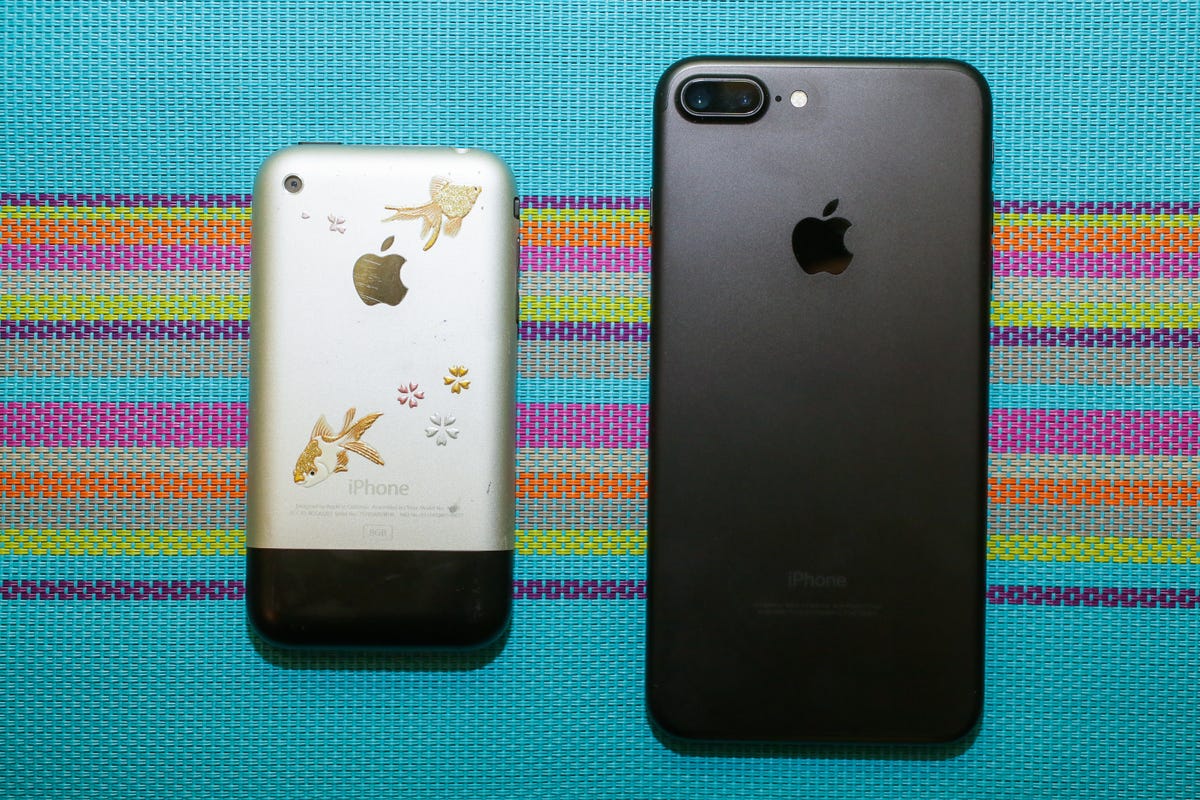

From the back, the original iPhone (left) and the iPhone 7 Plus look nothing alike.
Sarah Tew/CNET
Touchscreen
At a generous 3.5 inches, the display takes full advantage of the phone’s size, while its 480×320-pixel resolution (160 dots per inch) translates into brilliant colors, sharp graphics and fluid movements. Fortunately, we can report that on the whole, the touchscreen and software interface are easier to use than expected. What’s more, we didn’t miss a stylus in the least. Despite a lack of tactile feedback on the keypad, we had no trouble tapping our fingers to activate functions and interact with the main menu. As with any touchscreen, the display attracts its share of smudges, but they never distracted us from what we were viewing. The onscreen dial pad took little acclimation, and even the onscreen keyboard fared rather well in our testing. Tapping out messages was relatively quick, and we could tap the correct letter, even with big fingers. The integrated correction software helped minimize errors by suggesting words ahead of time. It was accurate for the most part.
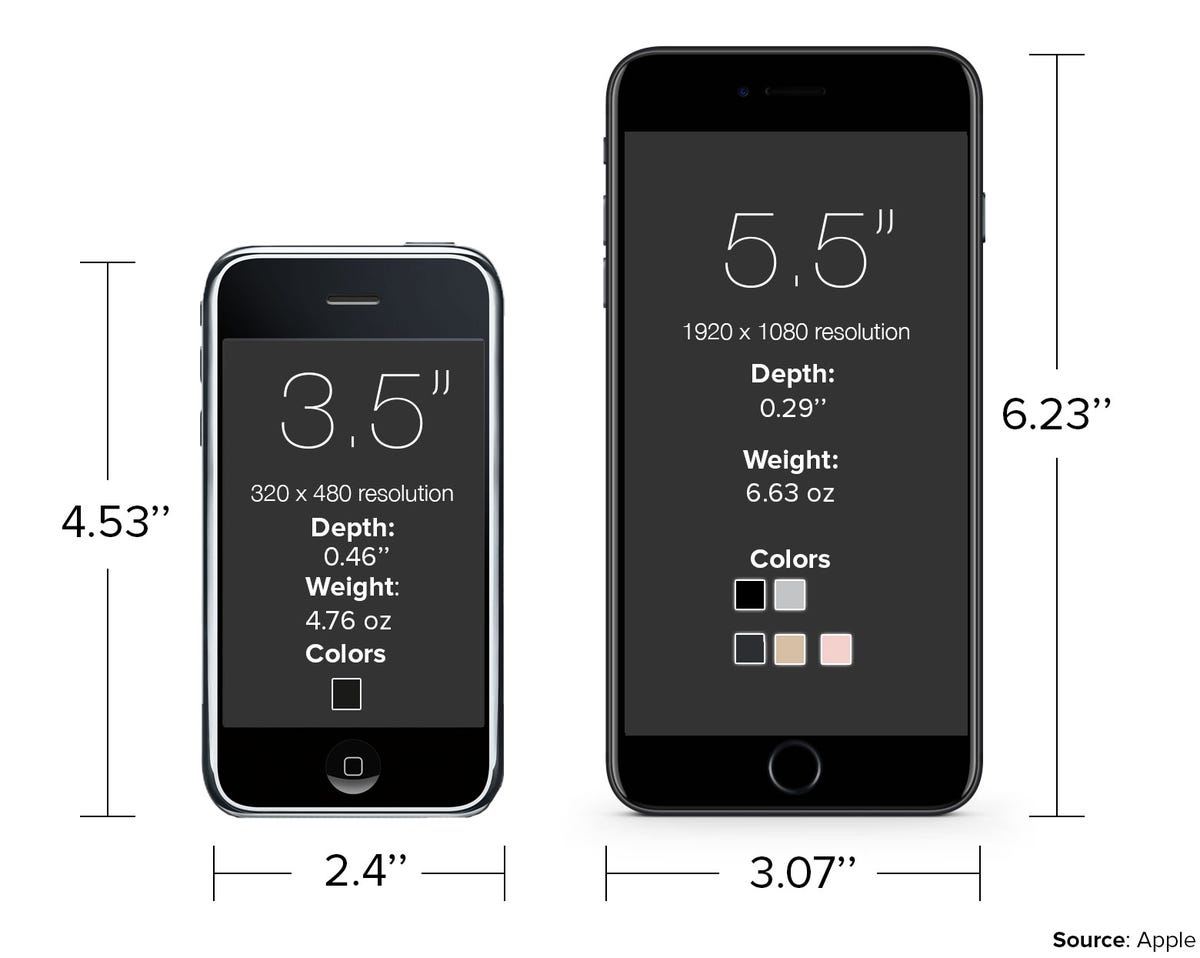

How we have grown: The original iPhone compared with the iPhone 7 Plus.
Apple
Still, the interface and keyboard have a long way to go to achieve greatness. For starters, when typing an email or text message the keyboard is displayed only when you hold the iPhone vertically. Also, the lack of buttons requires a lot of tapping to move about the interface. Since there are no dedicated Talk and End buttons, you must use a few taps to find these features. That also means you can’t just start dialing a number; you must open the dialpad first, which adds clicks to the process. The same goes for the music player: Since there are no external buttons, you must call up the player interface to control your tunes. For some people, the switching back and forth may be a nonissue. But for multitaskers, it can grow wearisome.
Criticisms aside, the iPhone display is remarkable for its multitouch technology, which allows you to move your finger in a variety of ways to manipulate what’s on the screen. When in a message, you can magnify the text by pressing and holding over a selected area. And as long as you don’t lift your finger, you can move your “magnifying glass” around the text. You can zoom out by pinching your fingers together; to zoom in you just do the opposite.
Exterior features
The iPhone’s only hardware menu button is set directly below the display. It takes you instantly back to the home screen no matter what application you’re using. The single button is nice to have, since it saves you a series of menu taps if you’re buried in a secondary menu. On the top of the iPhone is a multifunction button for controlling calls and the phone’s power.
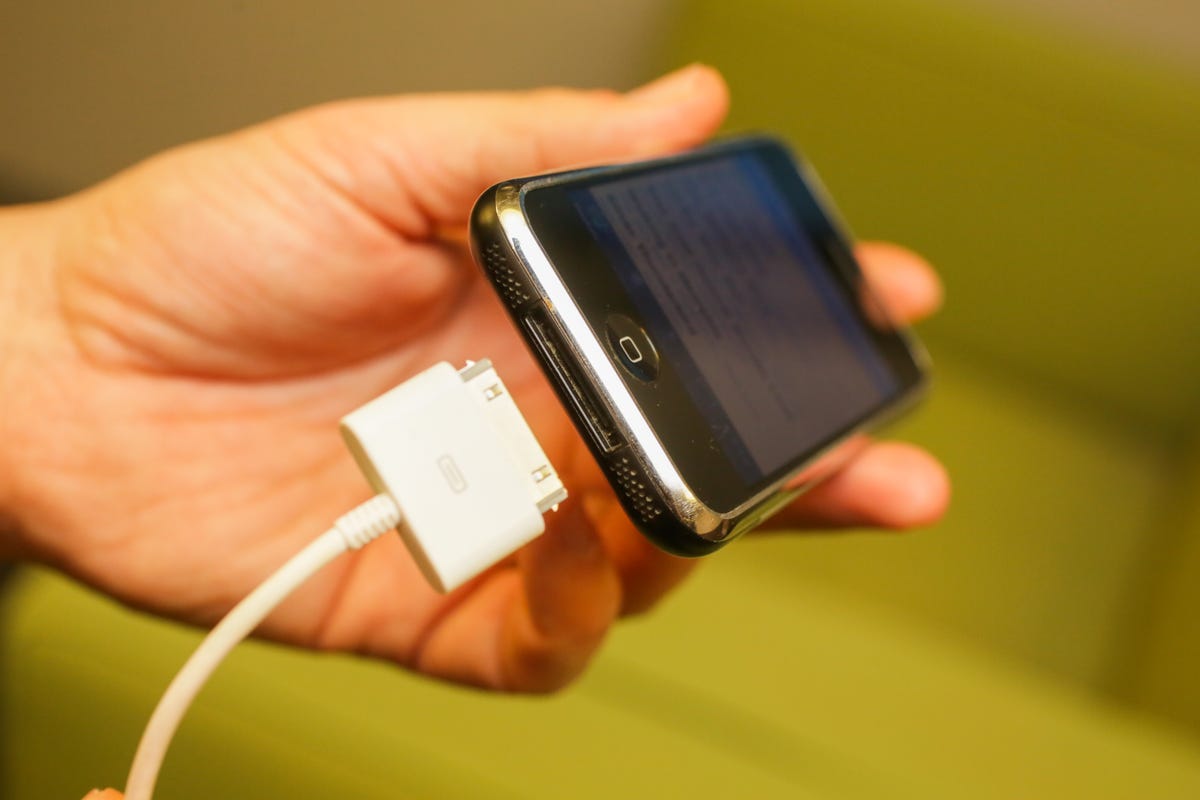

It didn’t feel so big back then, but now the original 30-pin connector looks humongous.
Sarah Tew/CNET
Located on the left spine are a volume rocker and a nifty ringer mute switch, something all cellphones should have and which is a popular feature of Palm Treos. On the bottom end, you’ll find the speaker, a microphone, and the jack for the syncing dock and the charger cord. Unfortunately, the headset jack on the top end is deeply recessed, which means you’ll need an adapter for any headphones with a chubby plug. Is this customer-friendly? No.
Unfortunately, the Phone doesn’t have a battery that a user can replace. That means you have to send the iPhone to Apple to replace the battery after it’s spent (Apple is estimating one battery will keep its full strength for 400 charges — probably about three years’ worth of use). The cost of the replacement is $79 plus $6.95 shipping. No, you don’t really need a removable battery in a cellphone, but like many things missing on the iPhone, it would be nice to have, especially for such an expensive phone.
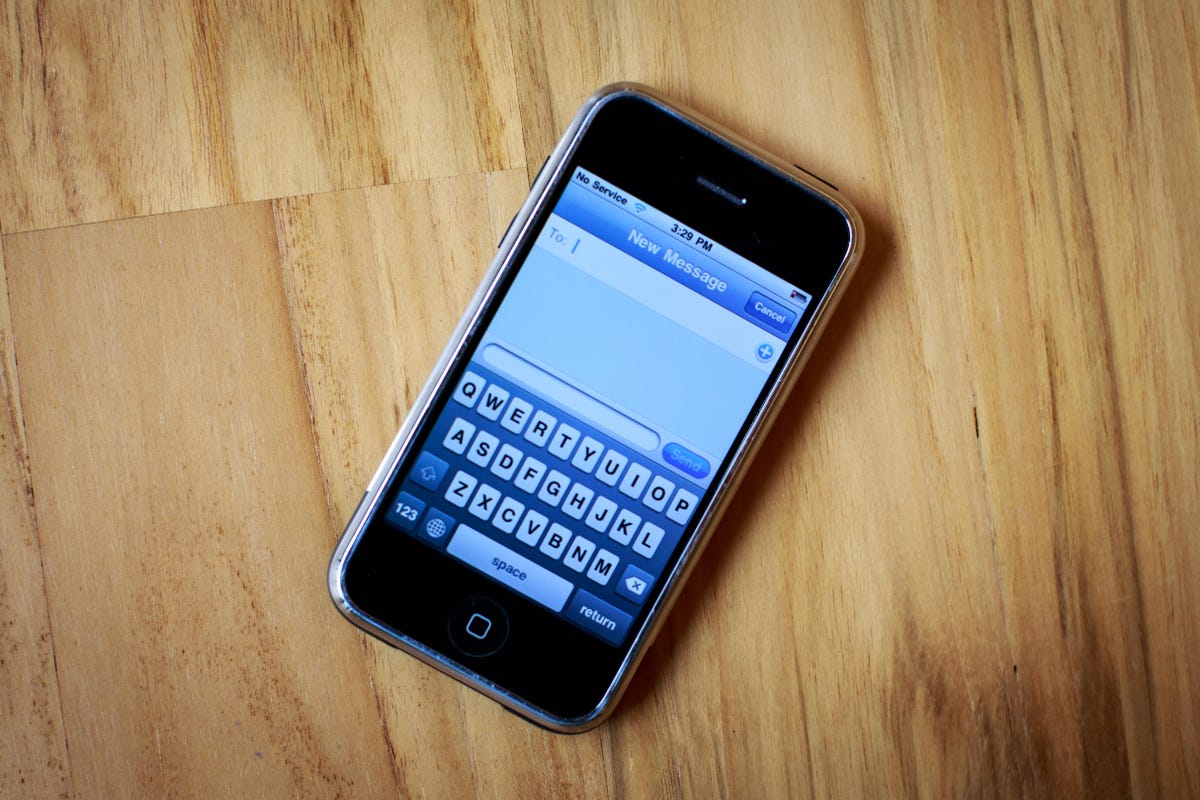

The iPhone’s onscreen keyboard, which was only in portrait mode at this point, was a rare feature.
Josh Miller/CNET
Messaging and email
For your messaging needs, the iPhone offers text messaging and email. As on many smartphones, a text message thread is displayed as one long conversation — a useful arrangement that allows you to pick which messages you’d like to answer. If you use another function while messaging, you can return to pick up that message where you left off. We just don’t understand, however, why Apple doesn’t include multimedia messaging. Sure, you can use email to send photos, but without multimedia messaging you can’t send photos to other cellphones — pretty much the entire point of a camera phone.
The iPhone’s email menu includes integrated support for Yahoo, Gmail, AOL and Mac accounts. You can set up the phone to receive messages from other IMAP4 and POP3 systems, but you’ll need to sweet-talk your IT department into syncing with your corporate exchange server. Yet the iPhone does offer a way to connect with your VPN. You can read — but not edit — PDF, JPEG, Word and Excel documents. Worse: You can’t cut and paste text when composing messages.
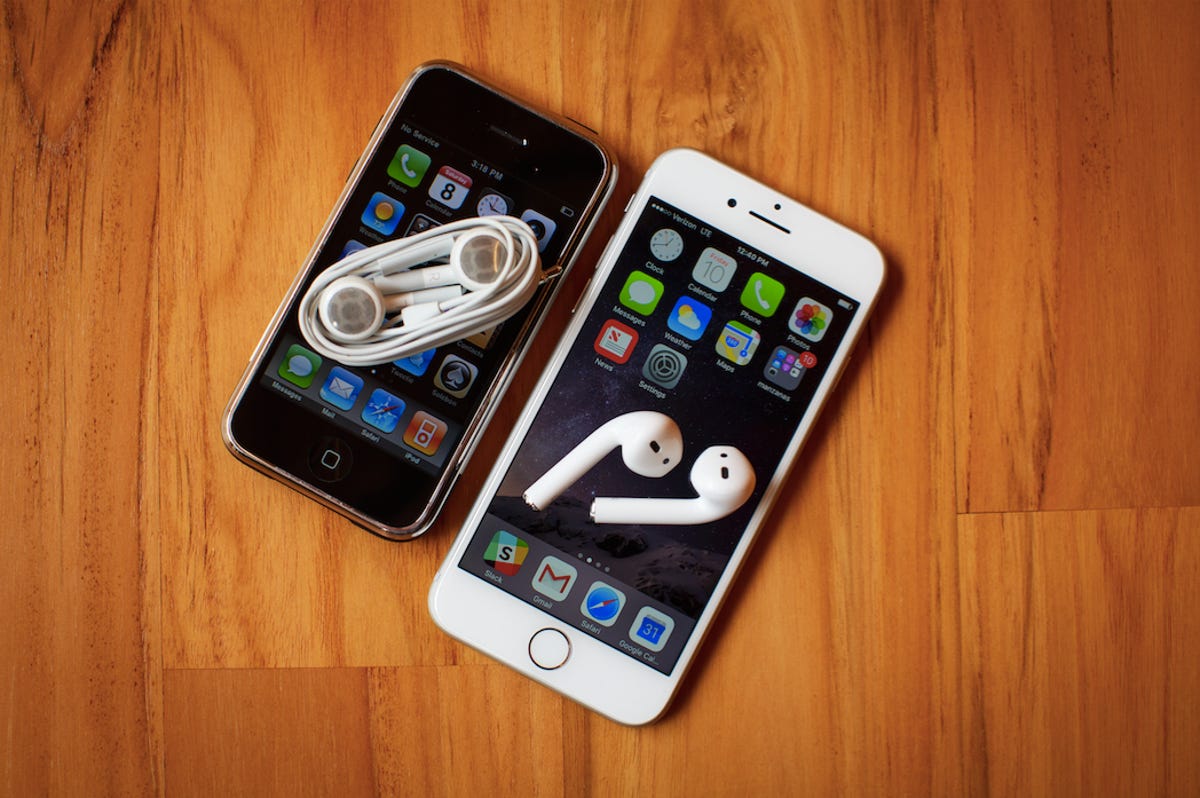

The original iPhone (left) with its wired headphones next to the iPhone 7 and a pair of AirPods.
Josh Miller/CNET
iPhone’s iPod


The unattractive and unsuccessful Motorola Rokr E1
CNET
Sandwiched between all the iPhone’s features lives Apple’s most amazing iPod yet. The display, interface, video quality, audio quality — all of it is meticulously refined and beautiful. Unfortunately, it’s trapped within a device that will cost you more than $1,000 a year just to own. Regardless, the iPhone is an exciting glimpse into what Apple hopefully has planned for its sixth-generation iPod. Apple has redeemed itself following the Motorola Rokr E1 debacle.
From an iPod perspective, Apple’s biggest triumph with the iPhone is the fact that it has returned album artwork back into the music experience in a way that goes beyond a token thumbnail graphic. Physically flipping through your music collection in the iPhone’s Cover Flow mode really brings back the visceral feel of digging through a CD or record bin. It’s a tough feeling to quantify, but the real music lovers out there will appreciate how well the iPhone reconnects their digital music to a form that is both visually and physically more vivid.
The bad news is that unlike any previous iPod, the iPhone doesn’t allow an option for manually dragging and dropping content from an iTunes library directly to the iPhone device icon. Instead, the iPhone strictly uses defined library syncing options for collecting and syncing content from your iTunes library to the device. Our 8GB iPhone was already a quarter full after only a few hours of testing, giving us the impression that users will need to be vigilant about grooming their iPhone library. An external memory card slot is another one of those “nice to have” features.
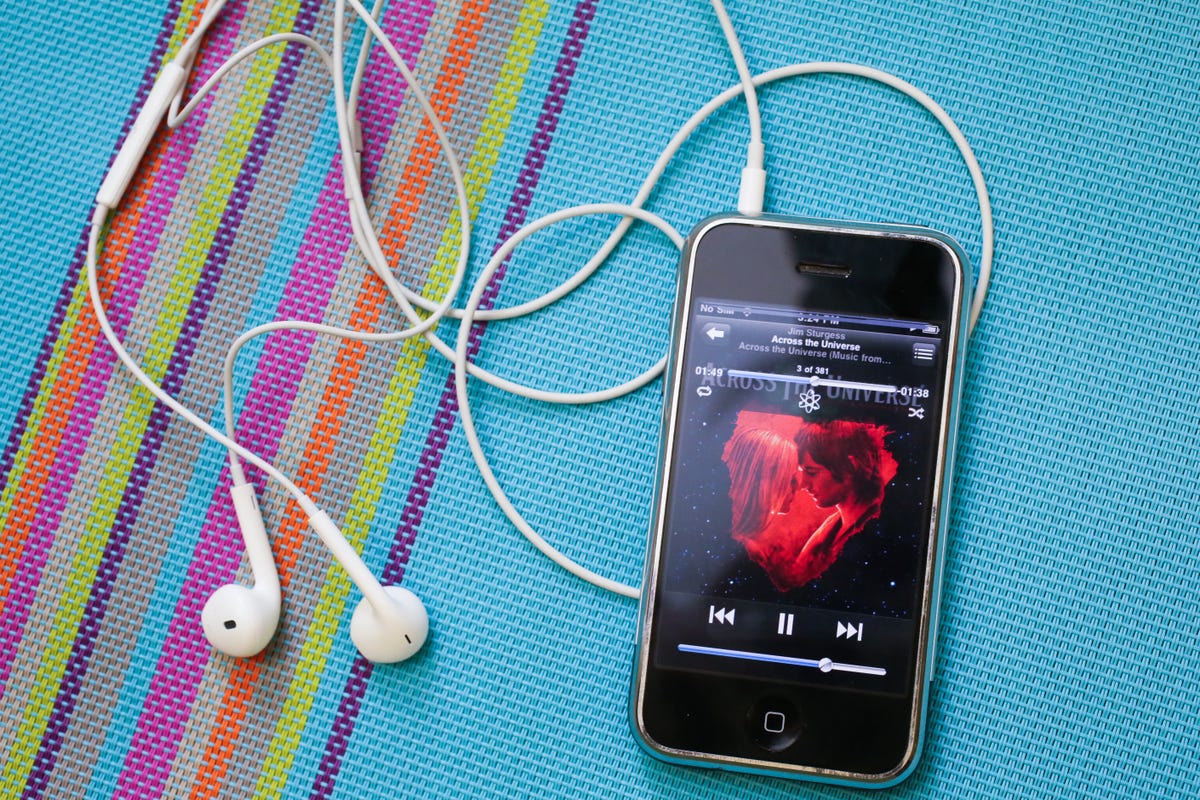

The music player on the original iPhone.
Sarah Tew/CNET
Safari browser
The Safari browser really sets the iPhone apart from the cellphone crowd. Rather than trudging through stripped-down WAP pages with limited text and graphics, the browser displays Web pages in their true form. It’s a surprisingly satisfying experience to see real Web pages on a screen of this size. Our only regret is that the browser doesn’t support Flash or Java.
The iPhone offers a full range of wireless functionality with support for Wi-Fi and Bluetooth connectivity. The Wi-Fi compatibility is especially welcome, and a feature that’s absent on far too many smartphones. When you’re browsing the Web, the iPhone automatically searches for the nearest internet hotspot. Bluetooth 2.0 is also on board, which delivers faster transmission and a longer range than Bluetooth 1.2. You can use Bluetooth for voice calls, but you don’t get an A2dP stereo Bluetooth profile — another item that isn’t necessary but would be nice to have.
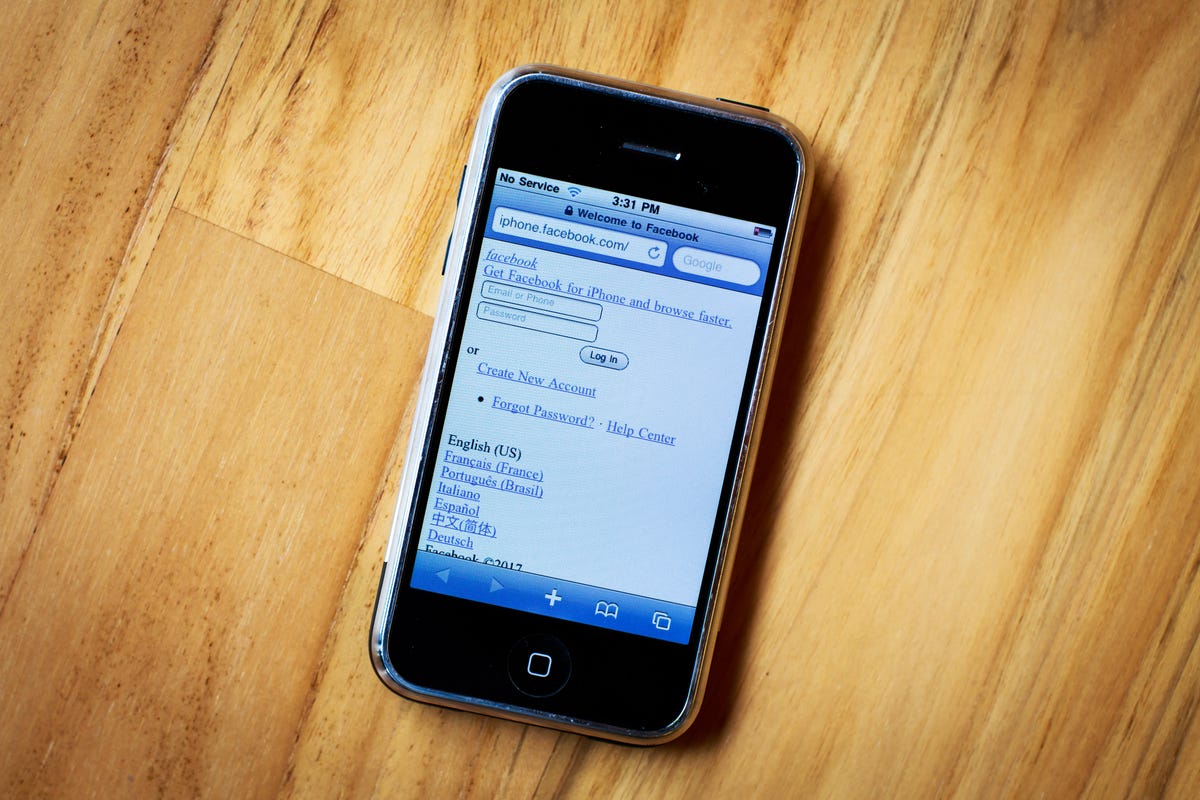

Even the first iPhone’s browser was light years ahead of any other phone’s browser at the time.
Josh Miller/CNET
Widgets
The iPhone has a widget for accessing Google Maps. You can see the satellite view — nice — and get turn-by-turn directions between two points, with traffic information. We tried mapping routes from CNET’s offices to various places and received accurate directions. We also like that you can get the Google satellite view.
Additional widgets are YouTube and stock information and weather reports. You can program your own tickers and get information like a share gain or loss and see the chart of a share price over time. The weather function gives you a six-day forecast for your choice of cities. No games are included on the handset.


A photo shot on the original iPhone.
Scott Stein/CNET
Camera
The iPhone’s 2-megapixel camera offers a spiffy interface with a graphic that resembles a camera shutter. You’re offered no camera editing options, which we didn’t expect. That means you can’t change the resolution, choose a color or quality setting or select a night mode. There’s no flash either, and with no self-portrait mirror, those vanity shots are going to be tricky. The camera performed well in our tests, however. Photo quality was excellent, with rich, bright colors and distinct object outlines. White looked a bit too soft, but we approve overall. On the downside, you can’t shoot your own video, which is disappointing on a phone at this price.


And a photo shot on the iPhone 7.
Scott Stein/CNET
Visual voice mail
One of the most intriguing features on the iPhone is the much-touted visual voice mail. iPhone’s voice mail works much like a text-message folder in that it displays the caller’s name or phone number and the time. What’s even more fantastic, however, is that you can listen to the message instantly by pressing the individual message — you don’t have to call your voice mail first.
Battery life
The Apple iPhone has a rated battery life of eight hours talk time, 24 hours of music playback, seven hours of video playback and six hours on Internet use. The promised standby time is 10.4 days. In our talk time test, we managed 7.3 hours of battery life.
The post Look Back at CNET’s Original iPhone Review first appeared on Joggingvideo.com.
]]>The post Spending All Night With the First iPhone first appeared on Joggingvideo.com.
]]>This story is part of Focal Point iPhone 2022, CNET’s collection of news, tips and advice around Apple’s most popular product.
Editor’s Note: The following story originally ran on June 29, 2017, for the 10th anniversary of the iPhone launch. We’ve republished the story in its original form for the 15th anniversary.
iPhone releases these days aren’t quite as fervent as they were a decade or more ago. The ability to order online has largely preempted the need to stand in a long queue to buy the newest model, but also the novelty has worn off after so much time. A new iPhone may be exciting, but it’s not the first iPhone of them all.
It was a different story on June 29, 2007. That’s when I was standing outside the Apple Store in downtown San Francisco in the middle of a huge crowd waiting for the very first iPhone to be released. It was a balmy summer evening (by San Francisco standards) and the Financial District bars were filling with Friday happy-hour crowds eager to start the weekend. But for former CNET editor Donald Bell and me, our workday was just beginning.
Our original iPhone review
Our assignment that evening was to pick up our iPhone review model and head back to the office to start writing the CNET review, published in real time while we tested Apple’s new device for the first time. The plan was that in a few hours we’d know whether it lived up to its stratospheric hype.
The scene outside
The phone was to go on sale at 6 p.m. sharp. By the time we arrived, the enormous throng amassing on the sidewalk was spilling onto the street, nearly blocking the traffic that struggled to pass by.
On one side of the store, a queue of eager buyers that had started to form early in the week was wrapping around the corner and out of sight. On the other side, scores of spectators swarmed against the windows eager for a look while employees inside prepared for the onslaught.


Now playing:
Watch this:
The iPhone at 15: How Apple’s Phone Became the Center…
4:52
Chaos is a strong word now, but not so much at the time as I was nearly flattened against the store’s glass wall by people pushing in for a look. Finally, the magic hour came and a scene unfolded that has now been repeated many times: The doors opened and cheering, clapping employees formed two lines to greet the excited customers filing in.
We had no time to waste. Donald and I quickly picked up our phone and hurried back to the office to hunker down and get to work. We started with the First Look video that you can watch above (when did I ever have that much hair?) and then started poking and prodding the phone while noting our observations in a CNET Crave blog post. By 2 a.m. we were done and CNET’s first iPhone review was finished and live. It took pizza, beers and a few hours in an empty office.
The original iPhone’s competition: Remember these top phones from 2007?
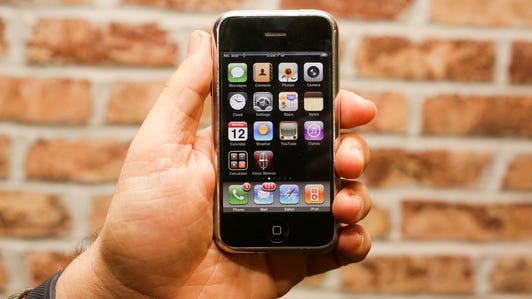

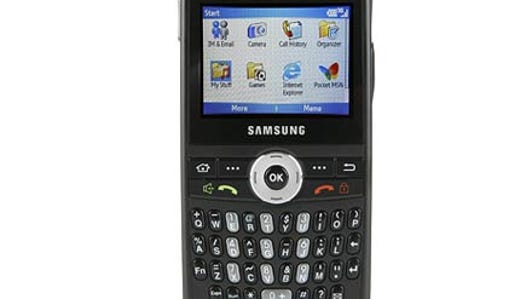

+10 more
A new kind of smartphone
Reading back now, it’s remarkable how different it was from any other phone on the market at the time. Many of us, me included in 2007, still used flip phones that didn’t do much besides make calls. Sure, other “smartphones” existed, but they used mobile software from Palm, BlackBerry and Windows Mobile. The first two were fine, but Windows Mobile? Even back then I said don’t bother.
The story of the first iPhone wasn’t that it had features we’d never seen before, but that it presented them better. Beyond a user interface that didn’t need an instruction manual, that story was true for the all-touchscreen design, the music and video player, the mobile browser and the easy integration of the first apps like email, Google Maps and YouTube (the actual iOS App Store would come a year later).


The original iPhone (left) next to the iPhone 7.
Josh Miller/CNET
It was missing some very basic things, such as 3G, stereo Bluetooth, voice dialing and video recording on the (2-megapixel!) camera. We rightly made a fuss about those omissions, but they eventually arrived. Likewise, while we praised the beginnings of iOS, it took a while before we got necessary things like multitasking (well, Apple’s version of it), cut and paste, and multimedia messaging. Oh, and that nonremovable battery? At the time it was an outrage, but now it’s commonplace. And how small that first iPhone looks today!
Even with those first iPhone shortfalls, popular Windows Mobile and Palm OS smartphones with physical keyboards such as the Palm Treo, Motorola Q, Samsung BlackJack and Nokia N95 struggled to keep up. BlackBerry phones, fueled by a passionate and devoted user base, lingered on until just this year. Google countered a year later with the Android OS (born on the T-Mobile G1, aka HTC Dream) and a ferocious rivalry commenced. Windows Phone tried to muscle its way in, but had limited success (Microsoft killed the software in 2017).
Fifteen years later it’s a common cliché, and perhaps simplistic, to say that the iPhone brought the smartphone into the mainstream. But it’s also true.


Now playing:
Watch this:
Here’s which iPhone you should buy in 2022
8:19
The post Spending All Night With the First iPhone first appeared on Joggingvideo.com.
]]>The post ‘Animals are amazing’: How happy content finds its way to you first appeared on Joggingvideo.com.
]]>
It’s easy to get sucked into videos from The Dodo, even when you’re not doom-scrolling about local COVID-19 case numbers. Maybe it starts with a clip about an emaciated stray dog who’s been rescued and is lovingly nursed back to health. Or maybe it’s the story of a dog and cat who defy convention and become cuddling best friends.
In the end, though, it doesn’t matter which video sends you down the rabbit hole, even if it’s one about actual rabbits. What’s important is that you’re romping in one of the most comforting and least cynical places on the internet, a place where charming tales of animals divert your attention from sobering headlines. Sure, it’ll get schmaltzy after a while, and you may even feel emotionally manipulated, but you’re not here to feel bad.
Joanna Zelman, The Dodo channel’s executive producer, says giving viewers a sense of hope and optimism about the world is a pillar of the brand’s philosophy. “There’s not a ton of trust in the world right now,” she says. “But animals are as pure and honest and believable as you can get.”
A popular meme suggests that cat videos rule the internet, but our feline friends aren’t alone in occupying a prominent space online. Creatures of all types, from cows to parrots to turtles, star in The Dodo’s videos, which are viewed 5 billion times each month. But animal-related content is about more than just spreading warm fuzzies. It’s also a business that’s boomed in a pandemic year. Crowded with ad-supported videos, The Dodo’s YouTube channel is worth an estimated $18 million, according to Wired (the site’s reps wouldn’t comment on revenue figures), and it’s expanded with an online store and partnerships with companies like Airbnb and Netflix (for a series). Making you say “awww” is a goal, but sites like The Dodo are combining the feel-good with advocacy, commerce and much more.
“A major focus this year [is] trying to get people who are already Dodo fans to trust that we know pet products, and we can recommend things that their animals will love,” says Executive Editor Katy Brink. “It’s about always taking an animal-first approach to it, as we do with our content … we have a ton of room to grow and turn our viewers into consumers.”
The Dodo isn’t alone in its mission to become an authority in the pet space either. Animal shelter and rescue organizations like Hope for Paws (5 million YouTube subscribers), Howl of a Dog (1.28 million subscribers) and Takis Shelter (5000,000 subscribers) have strong online presences. Dogs also get plenty of love from social media accounts like We Rate Dogs. Run by Matt Nelson, it has almost 9 million followers on Twitter and uses its reach to raise money for pups in need.


Now playing:
Watch this:
MyQ’s smart doggy door can open at your pup’s command
2:20
Being animal-first
Started in January 2014, The Dodo began as a platform for written content ranging from lighthearted listicles to more serious advocacy columns (the site is named after the extinct bird to be a reminder of what can happen to unprotected animals). As Brink says, such content was doing well on Facebook at the time, but a dip into video began a year later with a mashup of cats playing with bananas. When the minute-long clip called Cats vs Bananas (Hint: The bananas often win) quickly earned a million views, and as Facebook began to let publishers monetize video, it was clear that easily shareable video was the site’s future.
“People were really responding to it,” Brink says. “Video was really the strongest way to reach people in terms of animal content, because it’s just so visual, and it’s emotional when you can see animals in action.”
Today The Dodo posts not just on Facebook and YouTube, but also on Twitter, Instagram, Snapchat, Pinterest and TikTok. Videos (each with advertising preroll) also populate its own site, along with articles about animals; advice and support for pet owners; and occasional pushes for donations to rescue and adoption groups. It’s a wide mix, enough to reach more than 110 million people each month. It can even get topical — in September 2016, a video titled Pets Who Hate Donald Trump showed dogs and cats barking or hissing at Trump’s image.
Good dog!
- Dog essentials list: 13 necessities for new dog owners
- Since my dog can’t talk, I tried telepathy instead
- Finding a pet during COVID-19 requires time, patience and even Zoom
Brink says the goal is to fill the gap between guilt-inducing content and pure fluff. “It’s not enough for a dog to just recover from a medical condition and get adopted,” she says. “That’s a passive thing. We want an active thing that shows a ton of personality and a ton of animal agency.”
Though the site does make its own videos for its regular shows like Foster Diaries and Cat Crazy, most of the clips that appear in your social media feed are produced by the site’s team of editors from submitted footage or from content they find online. It’s a collaborative production process, Brink says, with the editors encouraging the contributors from around the world to shoot at the animal’s level and construct an emotional story arc with a happy ending (three minutes is the typical length).
“[Our videos] really feel animal-first, from the shooting method to the script to the social packaging,” she says. “We’re telling the animal’s story rather than a story about someone’s pet.”
Besides boosting the site’s popularity — video views in August were up 175% over the same period in 2020, Zelman says — the coronavirus pandemic also has changed the kinds of stories viewers are responding to. In a stressful time, stories with stressful animal rescues are out, and “over the top joy” stories are in.
“We really double down on happy content, where there’s a clear takeaway … that people are good and animals are amazing, that there’s order to the world,” Brink says. “That kind of thing makes people feel really comforted.”
A browse through The Dodo shows that even videos about animals that you may not think of as comforting will bring a smile to your face. It’s a bizarre journey at times, but it’s also lovely, activist and educational. I saw people caring for the bees and skunks they rescued, a diver who befriended a shark, women who keep bats and snakes as pets, a turkey that’s enamoured with a dog. And there’s the tiny piglet struggling to survive who befriended a baby cow.
Zelman says with any animals that aren’t dogs, The Dodo’s editors need to go an extra step to make people feel connected to them (she cites a video about a camel called Bubba as her favorite). “That’s really a challenge,” she says. “We want to make those animals kind of feel like puppies, like you care about them.”
He’s always a good boy
If puppies are more your thing, there’s plenty on social media to vie for your attention. Twitter accounts like Humor and Animals, Cute Emergency and The Puppies Club feature adorable litters of pooches, but none reach the popularity of We Rate Dogs. Started as a Twitter account in November 2015 by then-university student Matt Nelson, We Rate Dogs has since expanded to 11.5 million followers on Twitter, Instagram, Facebook, and TikTok. An online store with branded merchandise helps bring in the cash.


Nelson with his German shepherd, Doug.
Matt Nelson
Now 24, Nelson says he created the account after opening his own Twitter account and quickly falling for the platform’s reach and potential. “I got addicted to the immediate gratification of a joke landing on social media, because the audience tells you pretty quickly [if it’s funny],” he says. “I knew that the topic that I wanted to write about was dogs, because I’ve always loved dogs.”
We Rate Dogs has a simple, but addictive, premise. Using content largely sent by followers (he gets about 1,000 submissions a day), twice a day he posts a photo of a dog with a short caption describing the pup’s story and personality, with a rating that’s meant to be on a 10-point scale. Part of the joke, though, is that all dogs get a rating of 12 to 14, with just a few winning the coveted score of 15.
At first he simply wanted to make people laugh, but in 2016 after noticing that Twitter had “become a very dark place,” he felt a change was in order. “It felt a little bit misplaced to have every post be an attempt at humor,” he says. “A wholesome direction was born out of that need. Everyone just wanted light, and my account was positioned to provide that light because it’s about dog photos.”
Nelson writes all content himself. He says the rating criteria is largely arbitrary, but he saves the top score for specific dogs (he’s awarded only 16 scores of 15 since in the account’s history). “Our audience knows that it’s an important rating,” he says. “This is usually a dog that has saved human lives — they have an incredible story that I’m able to communicate effectively.”
This is Shanel. She has lymphoma cancer. Her chemotherapy is working great, but she’s only halfway through her treatments and cannot afford to complete them. Her little sister Sweda really wants her to beat this, and you can help her do it below. 13/10 https://t.co/55HFW9shv7 pic.twitter.com/pPxBn4r337
— WeRateDogs® (@dog_rates) February 12, 2021
But audiences also respond to dogs with a low score of 12, something that amuses Nelson. “They get offended on behalf of the dog when it’s a 12. I just think, ‘Guys, take a step back and think about what you’re saying,'” he says Puppies or younger dogs typically get a 12 and dogs with more of a story typically get a 14.
Some posts are laugh-out-loud funny, some are simply sweet, and others take a more serious tone by featuring a dog with a medical condition. Posts in the latter category appear with a link to a GoFundMe campaign for the pet’s medical care, which typically raises more than what’s needed. A Feb. 12 tweet about Shanel, a Sheltie with lymphoma cancer, exceeded its $10,500 goal by $3,000 just three days later.
Since 2017, Nelson says, he’s helped dog owners raise $1.4 million. “For the family of the dog we choose, it’s immediate relief,” he says. “But when you’re working with an audience the size of mine that is so passionate, we’ve pivoted to trying to mobilize that audience for good.”
Finding a balance
As cute and heartwarming as it all can be, though, Nelson hasn’t avoided controversy. In 2017, he was criticized both for selling a hat mocking President’s Trump’s “covfefe” tweet in his online store and for donating half of the profits to Planned Parenthood. And in 2018, he was accused of whitewashing by deliberately changing a dog’s name from Kanan, a name with Arabic origins, to George.
At the time, Nelson told CNET he changed the name because a more common monosyllabic name would drive higher engagement to the tweet. He also cleared the name change with the dog’s owner in advance. “You’re more likely to engage and interact with a post when a dog shares a name with your own or you’ve encountered a dog with that name,” he says. “Sometimes I change the name because it’s too common.”
Here’s a very loving and accepting puppo. Appears to have read her Constitution well. 14/10 would pat head approvingly pic.twitter.com/6ao80wIpV1
— WeRateDogs® (@dog_rates) January 29, 2017
Posts about current events and political topics can be controversial, as well. The account has featured dogs at the 2017 Women’s March, the protests against Trump’s 2017 Muslim ban and the 2020 Black Lives Matters protests. When we spoke over Zoom earlier this month, Nelson said that choosing when to go topical has been a difficult line to walk — he never wants to force it. But the Planned Parenthood flap taught him that it’s something he has to do, and he says he’s not afraid to lose a follower who disagrees with his views.


The photo for the Thoughts of Dog account was one Nelson selected from We Rate Dogs.
Thoughts of Dog
“It’s very hard for me to take myself out of those accounts, because of how much of myself goes into the origin and the writing of them,” he says. “For the people that I want to cater to, it’s very comforting for them to know that.”
It’s an even harder decision for Nelson’s other social media account, Thoughts of Dog, which he started in March 2017. All posts are written from a fictional dog’s point of view, with musings about the unnamed human who cares for it, the importance of sniffing the neighborhood while on walks, and its love for its stuffed “fren” Sebastian (you can buy a Sebastian for $26 in Nelson’s online store). Misspellings, invented words (“snoozle” means sleeping) and random punctuation (periods always stand in for commas) are part of the wholesome fun.
Nelson says it took him a year to find his groove. On Twitter, Facebook and Instagram he now has 4.5 million followers. “People that really didn’t even have dogs see the joy in those posts” he says. “The mission of that account has always been just to provide a smile.”
sometimes. the human presses their noggin against mine. to figure out what i’m thinking. so i just think really hard. about how much i love them. and hope they figure it out
— Thoughts of Dog® (@dog_feelings) June 13, 2018
Providing a smile and perhaps even a tear is something the account definitely does. A tweet from 2018 that’s pinned to the account is not just one of its best, it’s a message every dog owner wants to believe. “Sometimes. the human presses their noggin against mine. to figure out what i’m thinking. so i just think really hard. about how much i love them. and hope they figure it out.”
Other tweets have referenced Zoom calls during the pandemic, the 2020 protests and a trip to the voting booth. He posted a vague, but hopeful 2019 tweet after two shootings in El Paso, Texas and Dayton, Ohio killed 30 people in one weekend. Once a topic is discussed, Nelson doesn’t visit it again. But no matter the tweet, he purposely doesn’t have his own German shepherd called Doug in mind when writing it. “We want that dog to be as every dog is,” he says. “We want that dog to be your dog. I want you to be that human.”
Not an escape
The pandemic has changed Nelson’s audience, as well. As the world went into lockdown, readers wanted more from his accounts than just escapism — they expected some social good to help dogs. “It’s not directly like an activist account, so people don’t treat it like it,” he says. “But they don’t think anybody should be escaping. They think we should be dealing with these problems.”
Nelson also is expanding beyond writing content online. He recently signed a partnership with Trupanion, a pet insurance company, and both We Rate Dogs and Thoughts of Dog have branded books and calendars.
the human just learned. they will be working from home. for the foreseeable future. this is simply a formality. i was never letting them go back anyway
— Thoughts of Dog® (@dog_feelings) November 24, 2020
The Dodo launched an adoption matchmaking tool called Pick of the Litter this month. The company wasn’t announcing any new ventures when we spoke, but Zelman says reaching new audiences while telling its animal stories is part of a long term strategy. “We’re constantly asking, ‘What’s the next platform?,” she says. “How can we really own this space in a way that we really believe in?”
For now, though, it’s just a warm and comfortable space where horses are rescued from ferocious wildfires, a wombat and a kangaroo become playmates in an Australian zoo, and a lovable make-believe dog reminds us that while we may be depressed about another lockdown, working from home is our best friend’s dream come true. Even in a nonpandemic year, I’ll gladly take some of that.
The post ‘Animals are amazing’: How happy content finds its way to you first appeared on Joggingvideo.com.
]]>The post Blackouts that cut cell service aren’t just annoying, they’re dangerous first appeared on Joggingvideo.com.
]]>This story is part of Road Trip 2020, CNET’s series on how we’re preparing now for what could come next.
It’s wildfire season again in California as the second and third largest blazes in the state’s history continue to burn. More than a thousand structures across 10 counties have been destroyed and (so far) five people have died as hazardous smoke blanketed the more populous parts of the Bay Area for weeks. But so far at least, Northern California utility PG&E hasn’t had to institute Public Safety Power Shutoff programs. I hope that lasts.
The programs, which are about as dystopian as they sound, were a fact of life across the state during fire season last year. To prevent its power lines from sparking wildfires during windy conditions — PG&E equipment caused the 2018 Camp Fire, the deadliest and most destructive in the state’s history — the public company purposefully plunged entire cities into darkness, sometimes for as long as a week. (The state’s other giant utility, Southern California Edison, conducted similar shutoff programs.)
Millions of Californians fumed, and government officials questioned whether the shutoffs were really necessary, even as the utilities insisted the blackouts could be a fact of life during fire season for the next decade. And it quickly became clear that the shutoffs had serious consequences outside of spoiled food in refrigerators. When cellphone towers in shutoff areas became either overloaded or offline completely, people lost a vital way to get emergency alerts or call 911. For Californians without landline at home — a number as high as 85%, according to AT&T — that’s a big problem.
I know firsthand.
A double blackout
Just before Halloween last year, I lost power for three days at my Oakland home. At first the outage was more inconvenient than anything else, especially in comparison to the people who lost their homes to the flames. Outside of reading by flashlight, there’s not much to do in a dark house after sunset, and the deserted roads without the glow of streetlights felt like zombies were ready to attack. OK, the sight of the Milky Way stretching across the sky above the East Bay was beautiful, but all I wanted was electricity.
The blackout also brought a shock. While I knew I wouldn’t have Wi-Fi, I didn’t expect I’d get barely any signal on my phone. By the second night in the dark, I realized just how disconcerting both a power and an information blackout are. I awoke about 2 a.m. to a strong smell of smoke wafting into my bedroom. When I had gone to bed, there were no reported fires nearby. But with strong gusts shaking the tree branches outside, anything can happen two hours later.
My first thought was I’d finally have to get my go-bag, grab the dog and put my disaster plan of a quick getaway into action. Other than a helicopter circling overhead, I couldn’t see or hear anything unusual outside. Yes, police will sweep through a neighborhood under evacuation order to warn residents, but I want to leave before that happens.


Normally, the Mormon Temple near my Oakland neighborhood is visible from miles around. Not so during a blackout.
Ray Chavez/Getty Images
With no landline or working TV and my battery-powered radio unwisely stashed in a box, I had only my phone to quickly confirm whether evacuation was necessary. Wildfires can move incredibly fast — the Camp Fire spread at the equivalent of one football field every second — and in the 2017 Tubbs Fire, residents of Santa Rosa, California, had only minutes to flee before entire neighborhoods were incinerated. I didn’t want to be in that position.
For what felt like an eternity, but was probably only five minutes, I had no bars. That meant no way to read tweets from the Oakland police or fire departments or receive Wireless Emergency Alerts. (You can turn the alerts off, but I keep mine on for situations like this.) Groggy and confused, I felt a mix of bewilderment and fear.
Being prepared
- Emergency go bag: What you need if you’re evacuating your home
- The gear and game plan you need to stay connected in a disaster
- The best portable power stations to buy in 2020 that run on batteries
- 10 generators to keep your lights on
Finally, after refreshing countless times, I got just enough of a signal to see posts on NextDoor saying that the smoke was blowing in from the Glencove fire nearby in Vallejo and that no new fires had started in Oakland. Ironically, a site I mock far more than take seriously (I relish tweets from Best of Next Door in particular) had calmed my momentary concern. I went back to sleep, relief replacing worry. The next morning I moved that emergency radio to a more accessible place and two days later, the power was back.
Something has to give
There are a lot of reasons to ask if the shutoffs are the right thing to do. As a person without kids to get to school or ageing parents to care for, I was only inconvenienced. But others weren’t so lucky. Local businesses like grocery stores and restaurants, some of which are independent and locally owned, lost billions of dollars and hourly workers lost pay for the forced time off.
More frightening is the chance the blackouts could make things worse. During the Tubbs Fire, Sonoma County officials didn’t send emergency alerts to phones in areas where the fire was spreading, leaving some residents with no warning that they needed to evacuate. When that fire was finally extinguished, 22 people had died and 5,643 structures were destroyed. Local governments likely won’t make that mistake again, but it won’t matter in a blacked-out home with no wireless service. No texts or tweets means no way to get life-saving information. Firefighters and first responders also depend on wireless networks to do their jobs, as was clear last year when Verizon throttled data for crews battling the Mendocino Complex Fire.
State officials have noticed. In January, the California Public Utilities Commission said it will consider requiring wireless carriers to provide as much as 72 hours of backup power for their towers during blackouts or face possible fines. If such requirements do come to pass, carriers like Verizon, AT&T and T-Mobile will resist any strong mandates — the California Cable & Telecommunications Association told the San Francisco Chronicle there were “significant, real-world challenges” to installing generators.
Generators at cell towers may not be the best fix, and they’d likely bring problems of their own. But as landlines continue to disappear, wireless networks need to be reliable, even during a blackout. Obviously, if a network is destroyed once a disaster happens, that’s another story. But I’m talking about that crucial period before a hurricane, fire, or blizzard hits. Residents need to be able to call emergency services and governments need a way to send alerts that get people out of harm’s way as a disaster is approaching. Because lives could depend on getting a text.
The post Blackouts that cut cell service aren’t just annoying, they’re dangerous first appeared on Joggingvideo.com.
]]>The post Pager, Discman and Game Boy: This is the tech we used in 1995 first appeared on Joggingvideo.com.
]]>This story is part of CNET at 25, celebrating a quarter century of industry tech and our role in telling you its story.
The year was 1995. Nirvana played on the radio, Toy Story was a hit movie, and as Netscape had its IPO and Microsoft released Internet Explorer, the World Wide Web boomed like a supernova. People went online, buying books on Amazon, searching for content on Yahoo and reading about it all on a new website called CNET.
As part of CNET’s 25th anniversary, we’ve spent the last month sharing with you how the internet, the technology industry and CNET itself have profoundly progressed over the last quarter of a century. But it’s not just our online experience, the people driving it and the technologies powering it that have changed. The personal gadgets we use today barely resemble those from the mid-1990s, and most of them are now combined in our phones. So strap on your pager, grab your Game Boy and make sure your camera has enough film: We’re taking a wistful and sometimes regrettable look back.
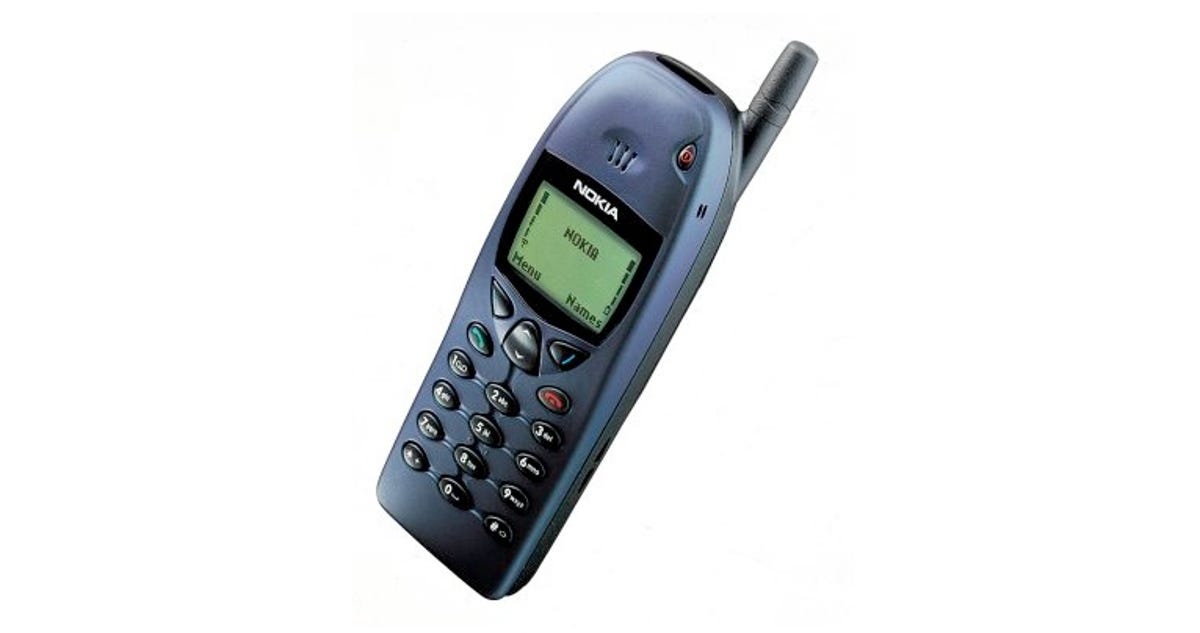

The Nokia 2110 didn’t do a whole lot, but it could fit in your pocket.
Nokia
Cellphone (not a smartphone)
After the brick-like Motorola Dynatac became a symbol of Wall Street excess in the 1980s, cellphones were beginning to slim down by 1995. Moto’s trend-setting Startac flip phone wouldn’t arrive until 1996, but the Motorola 3200 actually fit comfortably in your hand, as did Nokia’s slim 2110 (the company’s first phone with its famous ringtone). Of course, the phones of the day didn’t do much besides make calls — Nokia’s first phone with the game Snake debuted in 1997 and camera phones wouldn’t arrive in force until the early aughts — but they were reliable, sturdy and their batteries lasted forever. And unlike today, where every phone is a glass rectangle, it was a magical time in phone design where few of them looked alike.


Now playing:
Watch this:
Celebrating 25 years of CNET
3:58
Pager
If you didn’t have an early cellphone — and sometimes even if you did — a pager (or beeper as they were called on TV medical dramas) was a way to show how popular or important you were. Today the whole process for using one feels as archaic as setting your VCR to tape Melrose Place (see below): Dial a number, wait for a beep, enter the phone number for calling you back and hope your recipient is both near a phone and cares enough to actually follow through with your request. Pagers also let us send an early form of text message by inputting numbers that would either be code for some phrases or roughly spell out others. Some were obvious like “07734” for “hello” (when turned upside down), and 911 for “call me now!” But others such as 143 for “I love you” took a little more thought. Don’t get it? Add up the number of letters in each word: I (1) Love (4) You (3).


Sony’s 34-inch tube TV was a 200-pound beast.
Crutchfield
CRT TV
Forget hanging it on the wall or putting it on a slim media center, your television in 1996 was a bulky cathode-ray tube model that was an absolute pain (often literally) to move. Though it’s also somewhat true today with flatscreens, choosing your TV’s size back then really depended on how big your living room was. Because if you went too big, your big screen might take up more space than your couch. On the upside, device convergence was showing up in some TVs by the mid-1990s. Maybe you had one with the TV and VCR all in one box?
VHS tape
It’s May 22, 1995, and you can’t be home to watch the season finale of Melrose Place. Dr. Kimberly Shaw had pulled back her wig to reveal that enormous scar the previous season so you knew she was well on the road to doing something completely bonkers. And in one of the greatest moments in TV history, she didn’t disappoint when she blew up the drama-filled apartment building. Clearly, you can’t miss that, but in the pre-TiVo and DVR era, you had only one choice: Record it on your VCR. If you had set your VCR’s clock correctly, if you had enough tape, and if you could master programming your VCR correctly, you could be away and still catch Kimberly press the button. Just be kind and rewind.
Desktop computer
I bought my first laptop in 1999 — a Dell of some sort that I ordered over the phone. Even then it felt obscenely heavy, but I could still carry it with me easily when I moved across the country for grad school. That wasn’t the case with the desktop I had prior to that: a giant CRT monitor that took up most of my desk, the tower computer that I always hit my leg against, the connected, clickity-clackity keyboard that tilted up and the wired two-buttoned mouse that used a roller ball sensor instead of a laser. For storage, it had both CD and floppy disk drives and I could connect a cumbersome zip drive when I needed more space. And for my term papers, there was the noisy, grinding dot-matrix printer with those satisfying-to-tear-off perforated edges. By the way, a Compaq ProSignia Desktop 330 in 1999 started at $2,699, or about $4,150 in today’s dollars.
Show Us Yours: CNET readers’ old tech






+51 more
Dial-up internet modem
Brett Pearce/CNET
*Beeeeeeeep!* *Brrrrrrrrt!* *Ba-ding, Ba-ding!* *Kshhhhhht!*
OK, this tech came a bit later than 1995, but I had to include it. If you had a 56k dial-up modem, you’ll never forget the ear-shattering series of sounds that preceded your connection for “surfing the web.” It was slow and annoying, but it also came with a palpable sense of excitement as you anticipated your next drive on the information superhighway. Then came “You’ve got mail!” (because what other ISP besides AOL were you using at the time?) and a cluttered, but innocent internet without rapid-fire hate speech, YouTubers and dangerous disinformation that spread like wildfire through social media. Today’s Wi-Fi-driven “just open your browser” world puts you online instantly and you can use your landline phone at the same time (if you still have one), but some of the wonder is gone.
Cordless landline and answering machine
I had one well into the 2010s, mostly because I never worked up the energy to get rid of it. But the cordless phone was one of humankind’s great achievements when they first appeared in the 1980s. Forget the wall-mounted rotary phone or that wriggly cord that was always getting tangled — just pick up your handset and roam your house (remember this was a time where people actually talked on the phone). The digital answering machine — tape answering machines were disappearing by 1995 — let you screen calls. And unlike with voicemail, you could still pick up the call and answer with the obvious lie of, “Oh, I just got home.” Beeeep!


Now playing:
Watch this:
A look back at the launch of CNET.com
1:22
Boom box
Before MP3s and streaming and after much of the world had moved on from vinyl and LPs, we consumed music on cassettes and CDs (I’ll leave a discussion about MiniDisc players for another time). You could invest in an expensive room-spanning stereo system, with multiple boxes for your receiver, the different components and your speakers, but the boom box was an attractive alternative for apartment dwellers, college students and people who didn’t obsess over high-end audio equipment. It put all the stereo’s parts in one box and you could carry it easily. Larger models, like the one that lived in my dorm room, had detachable speakers.


You spin me right round, baby.
Donald Bell/CNET
Discman
Of course, music could even be more portable than a boom box. The cassette-playing Walkman was running out of tape by 1995 to be replaced by the CD-playing Discman. To listen to your grunge tunes, you likely had a simple pair of foam-padded headphones with an adjustable metal band. And, of course, in these pre-Bluetooth days, the wire that connected your headphones to your Discman was always getting tangled in something. Other accessories you may have carried included a padded CD carrying case, that opened like a flip book, and an adapter shaped like a cassette that you plugged into your car stereo’s tape deck. The only thing missing was a mixtape.
Film camera
A camera wasn’t in your phone, so you had to carry something else to take photos, and in 1995 it likely used 35mm film. You remember film… those little canisters you had to buy, pop in your camera and then take to get developed. Because film was a much more finite resource than a memory card in a digital camera, you had to be pretty discerning about how many photos you took. Today’s film photographers will argue that taking fewer photos is a good thing and I admit I miss the excitement of going to your local Fotomat kiosk to pick up prints from a recent vacation.
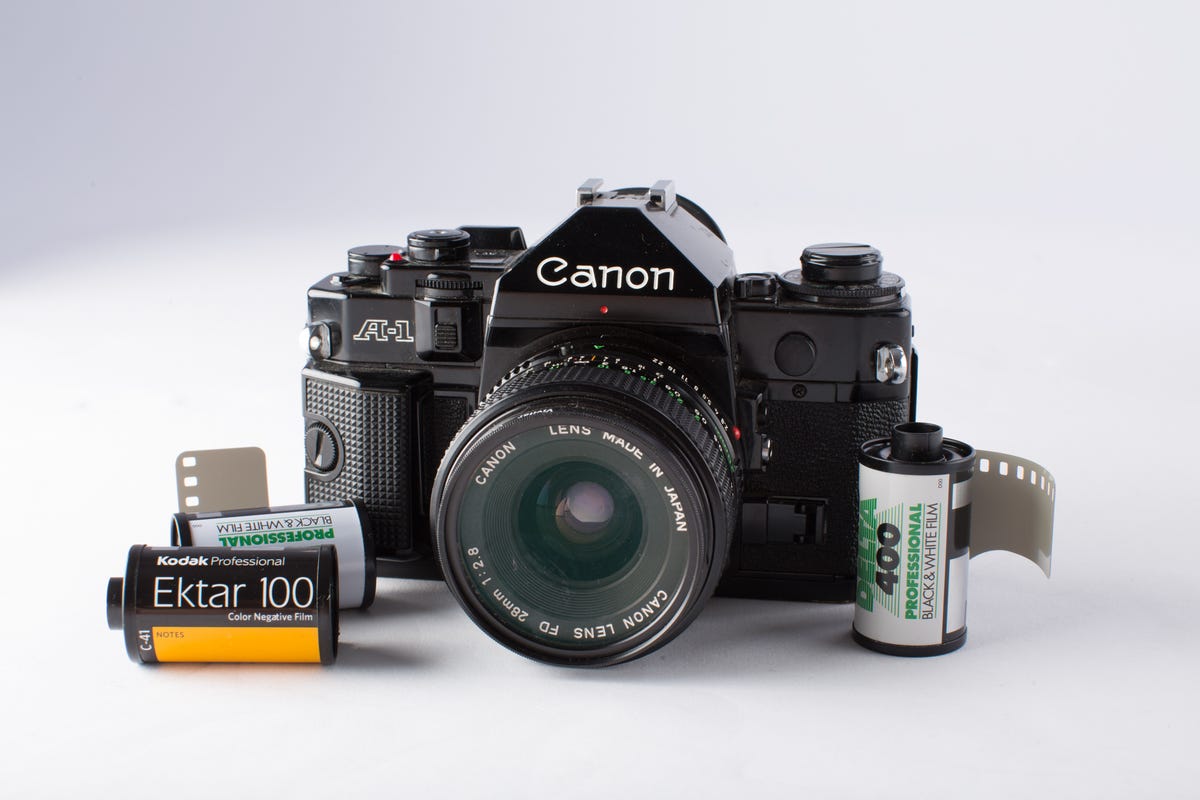

Whether you had an SLR or a point-and-shoot camera, you always had to remember to take enough film.
Josh Miller/CNET
Camcorder
No, your phones didn’t do this either so you had yet another device to film awkward family gatherings or chronicle your vacation with a video you’d watch once (if you did at all). By 1995, tape formats like Hi8, MiniDV and VHS-C made camcorders smaller than the VHS-equipped behemoths used by your high school AV Club. You could hold it on your hand, rather than positioning it on your shoulder, and it was easy to use on the go.
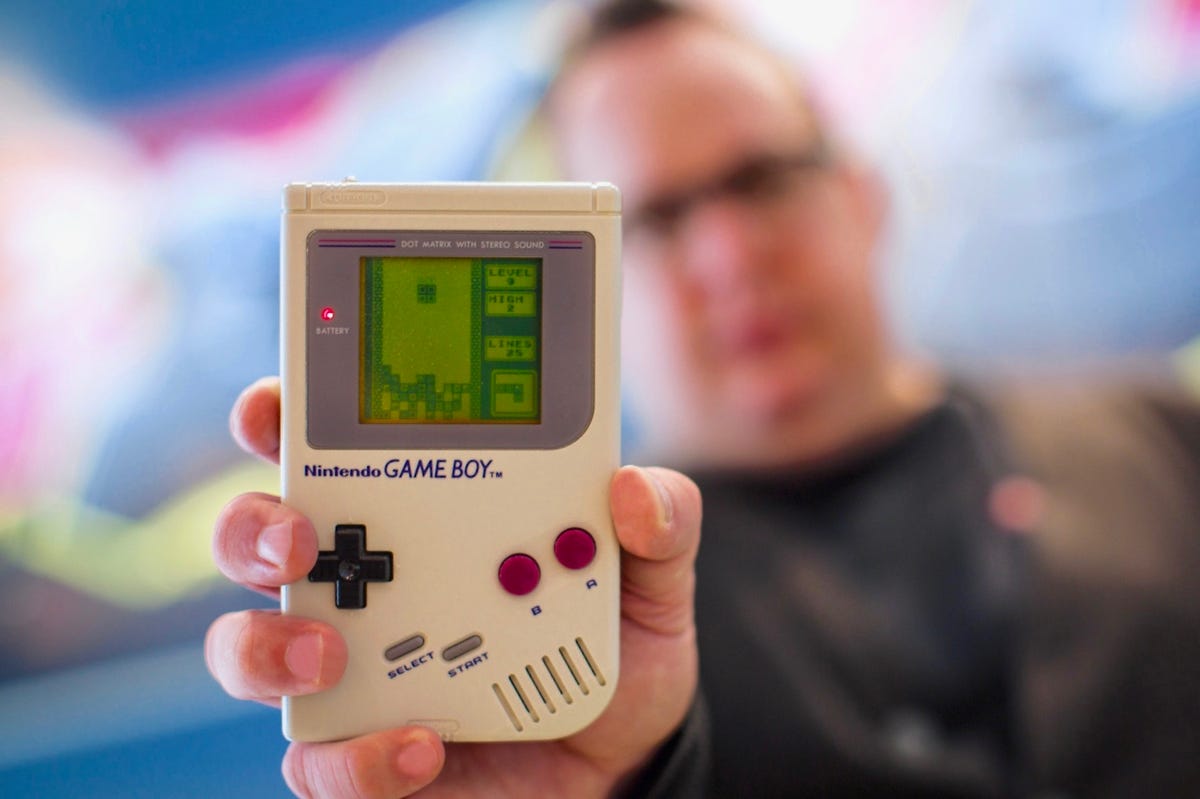

The original Game Boy revolutionized gaming.
Josh Miller/CNET
Nintendo Game Boy
Gaming on the go in 1995 probably came in the form of a Nintendo Game Boy. First introduced in 1989, the portable player grew hugely popular through the 1990s and its concept lives on today in the form of the Nintendo Switch. I didn’t have a Game Boy, so I defer to CNET’s Mark Serrels to describe its influence. “It’s a rare breed of device that becomes so synonymous with its purpose it becomes the default example for everything that follows in its wake … But perhaps the coolest thing about the Game Boy was the fact it subverted how, when and where video games could be played.”
What tech gear did you carry in 1995? Tell me in the comments.
The post Pager, Discman and Game Boy: This is the tech we used in 1995 first appeared on Joggingvideo.com.
]]>The post How we’re using the internet while sheltering at home first appeared on Joggingvideo.com.
]]>For the most up-to-date news and information about the coronavirus pandemic, visit the WHO and CDC websites.
If you’re one of the many people now working at home during the coronavirus pandemic, you know how important a reliable home internet connection is. If your network slows, you can’t complain to your IT department. Instead, it’s your internet service provider that has to support both your data needs and those of its other quarantined customers.


Now playing:
Watch this:
Is working from home dragging down our broadband?
9:56
Scott Mair, president of technology and operations for AT&T, says his company has seen increased demand on its core network over the past three weeks, but the bump has only about 19% from pre-pandemic levels. Mair spoke to CNET Editor at Large Brian Cooley as part of CNET’s Now What interview series.
“There’s a lot of traffic, but it’s occurring in different places versus where the norm has been,” he said. “Business areas have less traffic, but it’s showing up in residential and suburban areas where we normally wouldn’t see it. But at an aggregate level, the backbone is doing really well.”


Mair went on to cite statistics on how customers sheltering at home have changed their data use over the past month.
- Wireless voice calls are up by 30% to 40%
- Text messaging has increased by 40% to 45%
- But, surprisingly, email use is down 15% to 18%
Of course, it’s not unexpected that teleconferencing use has boomed as people work from home — Mair says AT&T has seen a healthy increase of 200%. If you notice your network crawls during calls, he suggests beginning your meeting at times other than the top or bottom of an hour. “Adjust a little time one way or the other…if there is any congestion, you’re likely going to avoid that.”
He also suggested that this will be a good time for customers to realize the promise of 5G, because tasks like streaming video will only get faster with the next-generation wireless technology. “I think people are focused on the reliability of their connectivity,” he said. “When you think about 5G, it will be more robust in terms of data speeds and response time.”
Mair had much more to say. Watch the interview for the full story.
Now What is a video interview and panel series with industry leaders, celebrities and influencers covering the major changes and trends impacting businesses and how consumers connect in the “new normal” 2020 world and beyond. There will always be change in our world, there will always be technology helping us navigate that change, and we’ll always discuss surprising twists, turns and potential solutions.
Managing your online meetings
- Zoom, Skype, FaceTime: 11 video chat app tricks to use during social distancing
- Zoom vs. Microsoft Teams: How to choose the best video chat app for working from home
- How to use iPhone and Android phones as a webcam in your video chats
Our new reality now that coronavirus has sent the world online
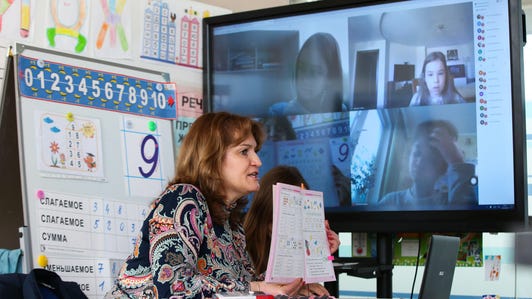





+12 more
The post How we’re using the internet while sheltering at home first appeared on Joggingvideo.com.
]]>The post Memories in a shoebox: Digitizing old photos unlocks a flood of mixed emotions first appeared on Joggingvideo.com.
]]>
There’s no correct answer to the question of how to spend your time sheltering at home during the coronavirus pandemic. Absolutely, you can choose to be productive by baking (that’s why every grocery store is out of flour), staring a new workout routine or tackling long-neglected projects around the house. Or, if you prefer, it’s completely fine to do nothing at all. I fall mostly in the former camp, and if you’re like me, may I be so bold as to recommend a worthy task?
Two years ago, I finally scanned the hundreds of photos I’d shot in the decades before I bought a digital camera. Roughly 20 years of my life were crammed into three shoe boxes that had been in my parents’ garage or stashed under my bed. Inside were many versions of my younger self: looking grossly unhappy on the first day of kindergarten, skippering a Jungle Cruise boat at Disneyland, and sitting on the steps of my first “adult” apartment in a pair of painfully ’90s pleated pants.
Rather than marooning the photos again to another closet when we moved into a new house, I figured it was finally time to do something with them. It was partly an exercise in purging, but it was also a way to safeguard memories should disaster hit. I live in earthquake and fire-prone California, and storing old photos seemed as important as making a disaster kit.
It was a satisfying box to check off on the to-do list, and a task that took little energy to complete — you can flip through photos while you’re quarantine-binging TV. A word of warning, though: Trips down memory lane are usually emotional, filled with equal parts joy, sorrow and “Why did I ever wear that?”
When in doubt, outsource
Though I have a scanner, it works far too slowly (and I’m too lazy) to process more than a thousand photos (my husband contributed his own stash). So, I followed Sharon Profis’ advice and carefully packed a box with prints and sent it to Scanmyphotos.com instead. Just choose the scanning and delivery package you want, pack a box and send it to the company’s office in Irvine, California. When your scans are done, the box comes back to you, along with electronic copies of your scans and a book listing your shots. The company is continuing to operate during the pandemic.
My experience was great and it only took a week to get my photos back. If you have a box of pictures sitting around, it’s an easy way to secure them. If you’re pushing the 2,000-photo mark, go for the $145-prepaid box, which the company says will fit about 1,800 prints. If you don’t have that many, scans start at 8 cents each.
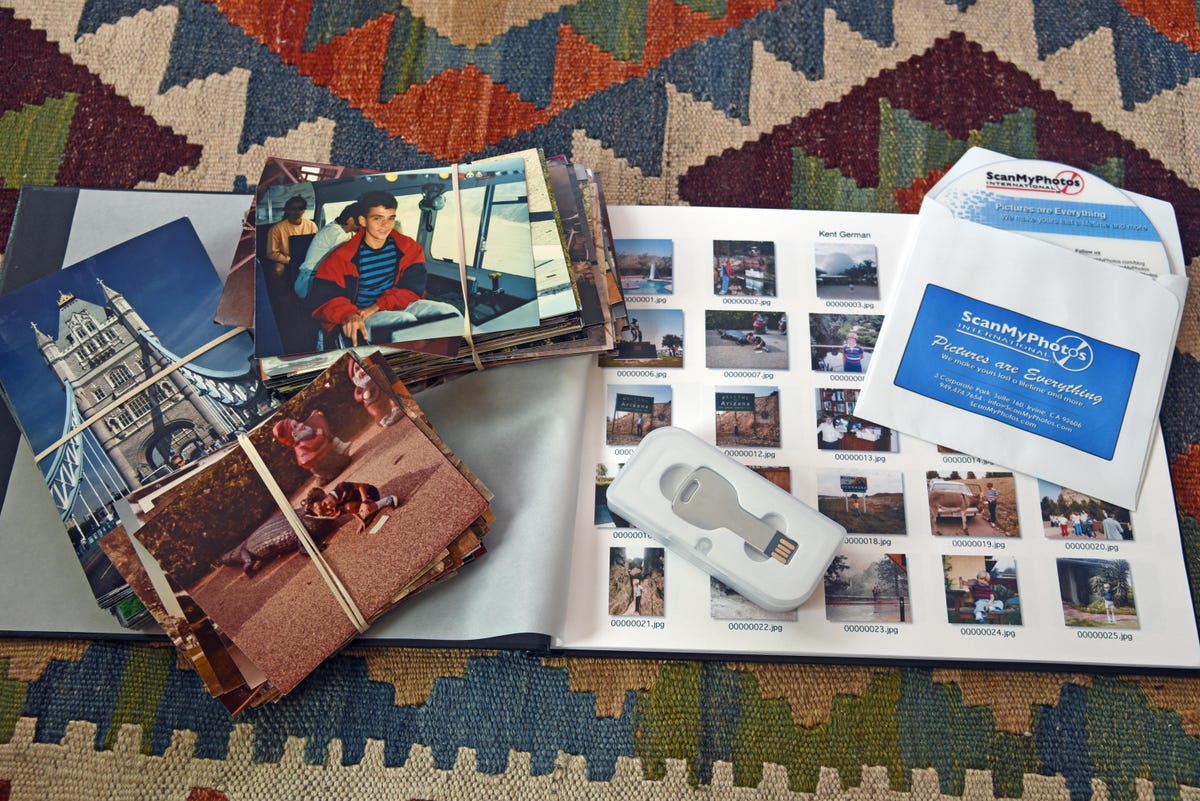
 Enlarge Image
Enlarge ImageAfter scanning, your prints will come back to you in bundles along with electronic copies of each print and a handy reference book.
Kent German/CNET
Your life in a box
First, though, I had to go through my snaps one-by-one and decide which ones to scan. You may prefer to throw everything in a box and scan them all, but I was more discerning. I didn’t need scans of the dozen photos I took of Mount Rushmore when I was 11. No, I wanted to save the snaps that really mattered.
My exploration started with the first photo I ever took — my mom standing in our Southern California backyard in 1981. I was 7 years old and wanted to take her photo as a “thank you” for buying me my first roll of film. She’s smiling under a bright July sun, next to my blurry finger covering part of the lens. I texted it to her, and she replied with a heart emoji and “Ahhh… you were just a little boy.”
Sorting through the next 20 years. I saw Christmas mornings and birthdays, graduations, my sweet English Springer Whitney, a visit to the top of the World Trade Center with my late grandparents, and camping trips with my dad. I even saw my 12-year old self standing near the London building where I would live 30 years later.
Later came college keg parties with red plastic cups and the first few years of living on my own, when my energy for rambunctious nights out with friends (some of whom have left us) was far more robust than it is now. It was wonderful, awkward and painful to relive those memories all at once.
Occasionally, shots were blurry or cropped horribly, or my stray finger was back in the way, but that’s the thing about film cameras: You don’t know how your shots will look until they’re developed. Digital cameras may have given us instant gratification and editing. But they’ve also taken away that marvelous suspense of waiting for your photos to come back from the store so you could tear open the pouch and relive that amazing holiday long after you returned home.


Now playing:
Watch this:
Top tips for buying a camera
2:50
Free your photos
Sorting through prints also reminded me how the switch to digital cameras fundamentally changed what many of us do with our photos. As film photographers can attest, film means you have to be more discerning with each shot and that “did I get it right?” anticipation is part of the creative process. Sure, most of my prints may have ended up in those shoeboxes that I hardly opened, but I kept others front-and-center by pressing them into albums or putting them in frames.
Since I bought my first digital camera in 2002, though, far fewer of my photos make it off a memory card, even though there are countless easy ways to export them. There’s just less incentive since I already know how they came out. Perhaps it’s better that way — printing only the best shots is far less wasteful — but just like when you write for print rather than online, it’s far more satisfying to hold your completed work in your hands than it is to see it flash by on a monitor. (Photos books are another great option to give your digital picture life.)
But by sorting and scanning old prints, I have the best of both the print and digital worlds. I still can leaf through my old photos when I’m feeling nostalgic, reminisce with my parents and embarrass longtime friends at milestone birthdays. Now these mementos also live in the digital realm, and if disaster does strike, I know they won’t be lost forever.
Those pleated pants, though? Well… they go back in the shoe box.
Bird photography takes flight with high-end cameras






+44 more
The post Memories in a shoebox: Digitizing old photos unlocks a flood of mixed emotions first appeared on Joggingvideo.com.
]]>The post CES 2020 Press Day: Foldable phones, veggie pork and LG’s $60K rollable TV first appeared on Joggingvideo.com.
]]>This story is part of CES, where CNET covers the latest news on the most incredible tech coming soon.
We’re almost at the end of the official CES press day. Typically the most exciting and jam-packed day of the show, it brings back-to-back press conferences from not just longtime tech stalwarts like LG and Sony, but also car companies and Impossible Foods. Here’s what’s caught our eye so far.
See also
- CNET’s 20 favorite products of CES 2020
- All the cool new gadgets at CES 2020
- Full coverage of CES 2020
More like C-TV-S
Remember that eye-popping LG TV from CES last year that rolled up into a box? Well, it’s back in Las Vegas with a release date of later this year (LG originally had said 2019). Now, if you’re drooling over adding such a conversation piece to your living room, you may want to grab a tissue. That smooth sliding action will likely cost you $60,000, or many times the cost of that vintage furniture where you planned to recline while binge-watching Succession.
The Dance of The Rolling OLED Fairies is back at LG’s #CES2020 booth, now with 10 drop-DOWN screens. pic.twitter.com/g8Oj8fHEp3
— David Katzmaier (@dkatzmaier) January 6, 2020
Ridiculously large TVs are a CES staple and Samsung didn’t disappoint. The Wall measures 292 inches (that’s over 24 feet or 7.4 meters), which is the largest TV CNET’s David Katzmaier has ever seen at CES. And considering how many TVs David has seen, and how many times he’s been to CES, that’s saying an awful lot. Samsung also showed a 150-inch version with 8K resolution, another 8K TV with barely any bezel and a TV called the Sero that can flip from a landscape to a phone-like portrait orientation. You know, because a way to stop looking at your phone so much is to just look at your TV instead.
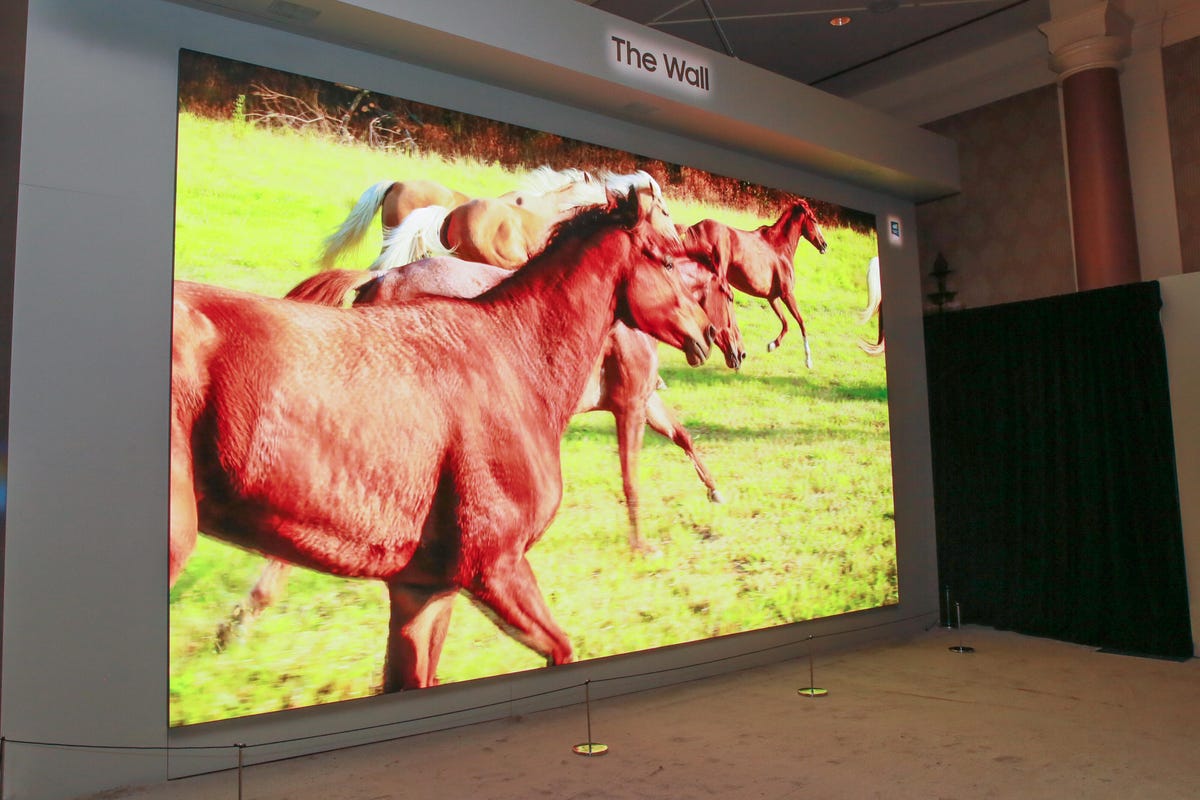

Samsung’s The Wall is the biggest TV ever seen at CES, at least until next year.
Sarah Tew/CNET
Sony has a concept car now
The car was built by Sony’s AI and robotics team — the same crew who make the company’s cute robotic dog Aibo. The concept doesn’t even have a name just yet (its code name was Safety Cocoon) — although it has been fully road tested. According to Sony, this is to ensure the vehicle and its platform Vision-S will comply with safety regulations.
Outlined briefly on stage Monday night, takes advantage of Sony’s expertise in sensors, imaging and entertainment to be used in the next generation of electric vehicles.
Oh, Sony also announced a logo for the PS5. Yes, a logo.
Sex tech gets respect
Though sex tech has made controversial appearances at CES before, this is the first year it has a place on the show floor. Last night, startup Lora DiCarlo showed the Osé, a device that uses advanced microrobotics to produce a blended orgasm. Lori DiCarlo also brought two new products to Vegas. The Baci is a “microrobotic pleasure device that simulates the feel and motion of the human lips and tongue” and the Onda is designed to replicate the motion of human fingers.


The Osé is back at CES, this time for good.
Lora DiCarlo/Illustration by CNET
Foldable phones and laptops
TCL says it has a foldable phone that will cost less than the gorgeous $1,500 foldable Motorola Razr flip phone released in October. After seeing TCL’s still-unnamed device in concept form at MWC 2019, CNET’s Jessica Dolcourt was able to play with a working prototype today. Though the software was a bit clunky, she says, it has enough tension in its hinge (unlike other foldable phones). Also from TCL, Jessica was drawn to a “beautiful” Galaxy S10 lookalike that costs less than $500.
TCL’s new foldable, a $500 5G phone and this gorgeous Galaxy S10 clone
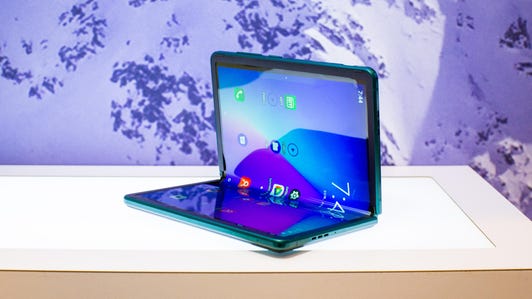

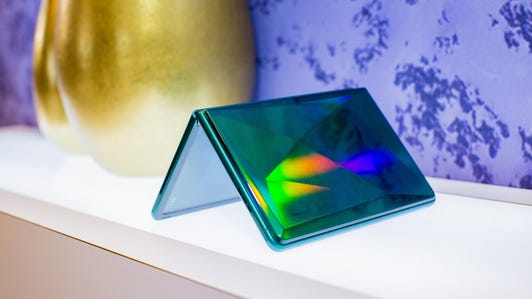

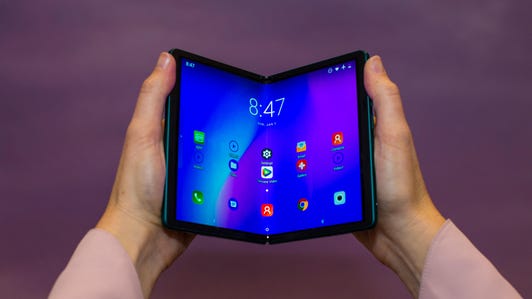

+22 more
Phones aren’t the only things that are folding. Dell showed the Concept Ori, a large, folding tablet that can close up like a book to protect the screen. Dell also had the Concept Duet, which has a more conventional design with two displays separated by hinge. You can use the displays separately or together as one big desktop.
Dell’s CES 2020 prototype PCs will change the way you use your displays
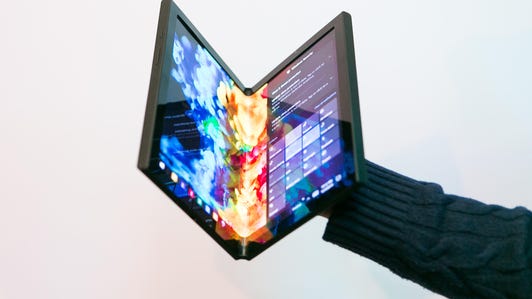





+29 more
Lenovo joined in the foldable fun with the ThinkPad X1 Fold. It’s a 13-inch OLED slate that can bend in half widthwise, forming what looks like a mini clamshell laptop. Or when full unfolded and rotated to a landscape orientation, just add a keyboard and mouse, flip out the slim kickstand and you have a desktop computer.
Lenovo’s Yoga 5G is the first 5G-equipped PC, and the first powered by the Qualcomm Snapdragon 8cx 5G Compute Platform. It also promises a full day of battery life. When you can’t get enough notifications, Lenovo ThinkBook Plus has a secondary 10.8-inch E Ink display that will show your all-important intrusions even when the laptop is closed.
Veggie pork? Not impossible
Impossible Foods, the company behind the veggie burger that bleeds is back with a plant-based version of the other white meat. Impossible Pork looks strikingly similar to real pork, it’s halal and kosher certified, and it supposedly tastes just the same. Impossible also will launch Impossible Sausage later this month.
BB-8, is that you?
Not quite. It’s Samsung’s Ballie, a round rolling robot that looks like the tennis ball you send your dog to fetch (they might share the name Ballie, as well). According to Samsung, Ballie “understands you, supports you and reacts to your needs to be actively helpful around the house.” Can it make dinner and open a ball of wine every night? Unclear.
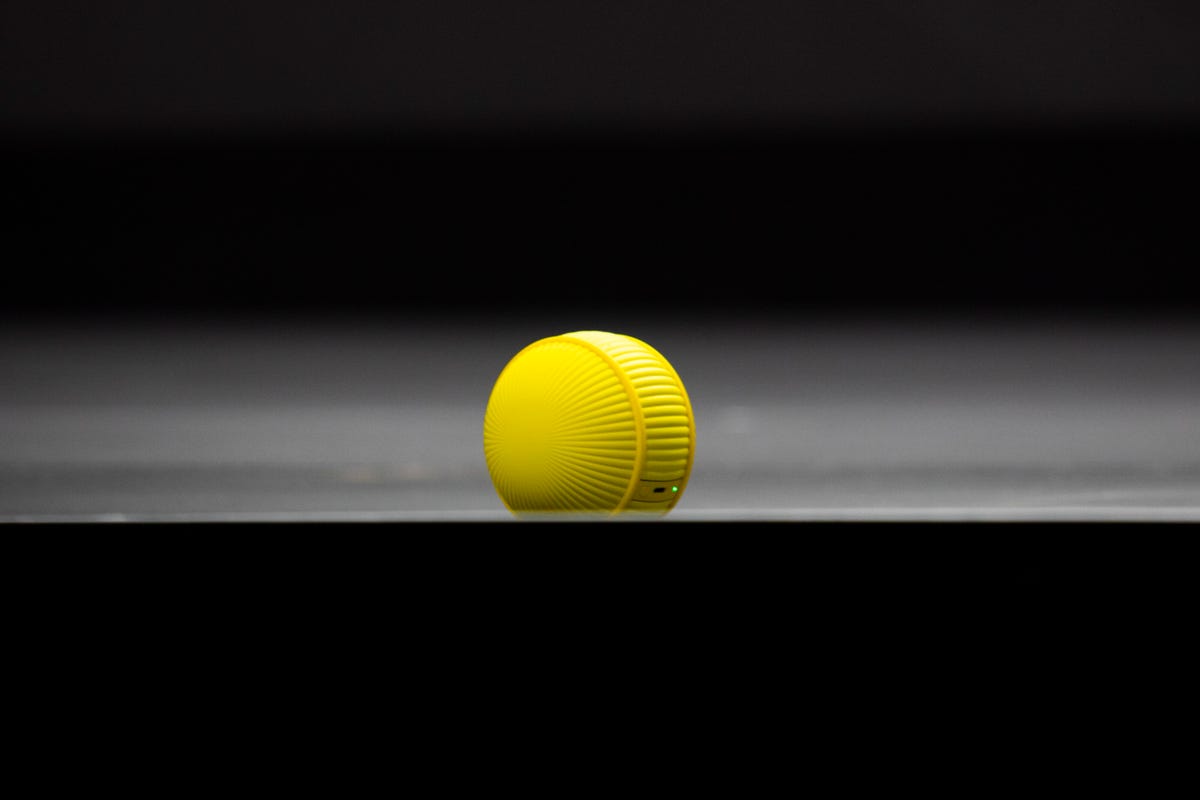

Ballie!
James Martin/CNET
On the road and in the air
Bosch showed a Virtual Visor that promises to end sun glare when driving. Using AI to locate a driver’s facial features, it will selectively block sunshine as the car moves.


Now playing:
Watch this:
This futuristic AI-powered LCD sun visor could put an…
1:48
Car speakers are so five minutes ago. Sennheiser and Continental, best known for its tires, want to pump your music into your car by vibrating interior components like the dashboard, A-pillar trim and door panel. Singing with your dashboard sounds weird, but the benefits to your ears and your car’s design could be big.
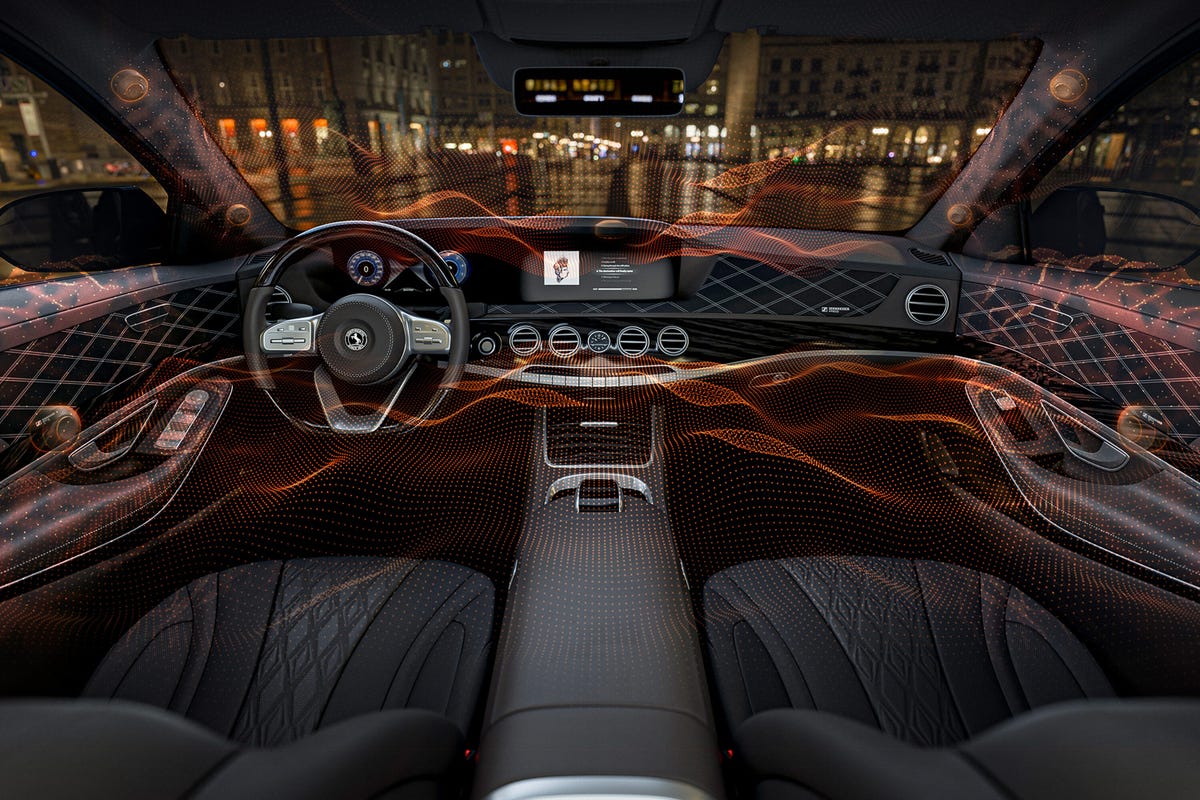

Continental’s Ac2ated Sound system eliminates speakers by essentially vibrating various interior components.
Continental
Hyundai wants to build air taxis for Uber’s Elevate urban air travel service. The Hyundai Urban Air Mobility S-A1 seats five, including the pilot, and has a top speed of 200 mph and a range of 60 miles. The four electrically driven props rotate to let it take off vertically, much like a quadcopter drone.
Hyundai partners up with Uber Elevate, debuts air taxi concept S-A1






+7 more
Forget smart locks, you need a smart door
LG has a shiny silver door for your posh home of the future that scans your face and palm for identity. And to deter package thieves (if packages even exist by the time this thing goes on sale), it also includes in-built delivery receptacles — one for packages and one for perishables.


For a door, it’s kind of cute.
Sarah Tew/CNET
Keyboard odds and tablet ends
Tired of food falling into your keyboard as you eat another deskbound lunch? Or maybe you just need more desk space? Then keep watch on Samsung and its plan for an invisible keyboard. Using the front-facing selfie camera on your phone or tablet, the “SelfieType” promises to use AI to “see” your fingers as you tap them on the desk in front of your propped-up phone.


Now playing:
Watch this:
CES 2020: Dell Alienware Project UFO
1:41
Alienware has long been in the business of trying to turn all kinds of gadgets into full-fledged gaming devices. Some creations were more miss than hit, but its latest creation is particularly promising. Showing at CES, the Concept UFO is two paddle-like controllers that you can attach to a Windows 10 tablet. The result looks and feels a lot like the Nintendo Switch.
All the cool new gadgets at CES 2020


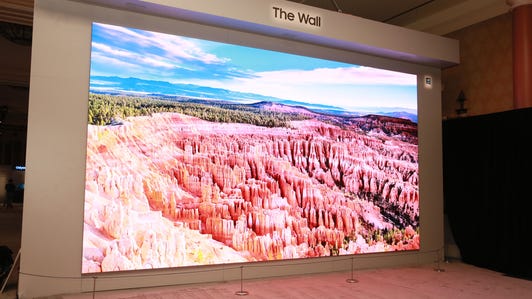



+85 more
The post CES 2020 Press Day: Foldable phones, veggie pork and LG’s $60K rollable TV first appeared on Joggingvideo.com.
]]>The post How the first Razr made Motorola cool again first appeared on Joggingvideo.com.
]]>
In May 2006, a former CNET colleague and I interviewed Ed Zander, Motorola’s CEO at the time. The original Razr V3 was two years old, and Moto was still riding a wave of excitement from the radically thin phone. It had expanded to other carriers beyond Cingular and the company had introduced a second-gen model, the Razr V3x.
In between questions about Apple’s then-rumored smartphone (the iPhone would finally debut the following January) and the company’s plans for the soon-be-released Motorola Q, I asked Zander what the V3’s success had meant to the company that pioneered the cellphone. Though I expected him to boast about the Razr’s stratospheric sales, he had a more thoughtful answer instead. The Razr, he said, had a tremendous effect on Motorola internally. As Zander put it, the phone made Moto employees realize the company “could be cool again.”


Now playing:
Watch this:
Motorola Razr is futuristic and familiar
12:33
His answer may sound like hyperbole, but it really wasn’t. In the two years prior to the Razr V3, Moto was producing a series of solid, dependable phones, but it was running behind rivals such as Nokia and Sony Ericsson in designing hits. Its last “it” phone, the swiveling V70, had gone on sale in 2002. The Razr gave the company a much-needed charge.


Motorola, now owned by Chinese consumer electronics giant Lenovo, gets another chance to be cool again. Much like it did in the early 2000s, Motorola finds itself largely ignored thanks to its portfolio of budget-friendly, but low-profile, phones. But the new Razr, which marries that chic clamshell design with a foldable display — CNET reviewer Jessica Dolcourt describes it as “nostalgic, with a sharp futuristic edge” — is a bold move from a company that hasn’t attempted many bold moves in recent years. (Roger Cheng has the full story on the new Razr’s creation.)
“The atmosphere at Motorola now is invigorating,” said Mike Jahnke, global industrial designer at Motorola, who was involved with both the original and new Razrs.
The first Motorola Razr shines just as brightly






+30 more
Don’t underestimate the Razr
The new Razr launches at a time when skeptics are questioning whether we even need foldable phones. It didn’t help that the Samsung Galaxy Fold suffered from early defects and Huawei delayed the release of its Mate X phone. Despite being shown off in February, the Mate X was only just launched last month.
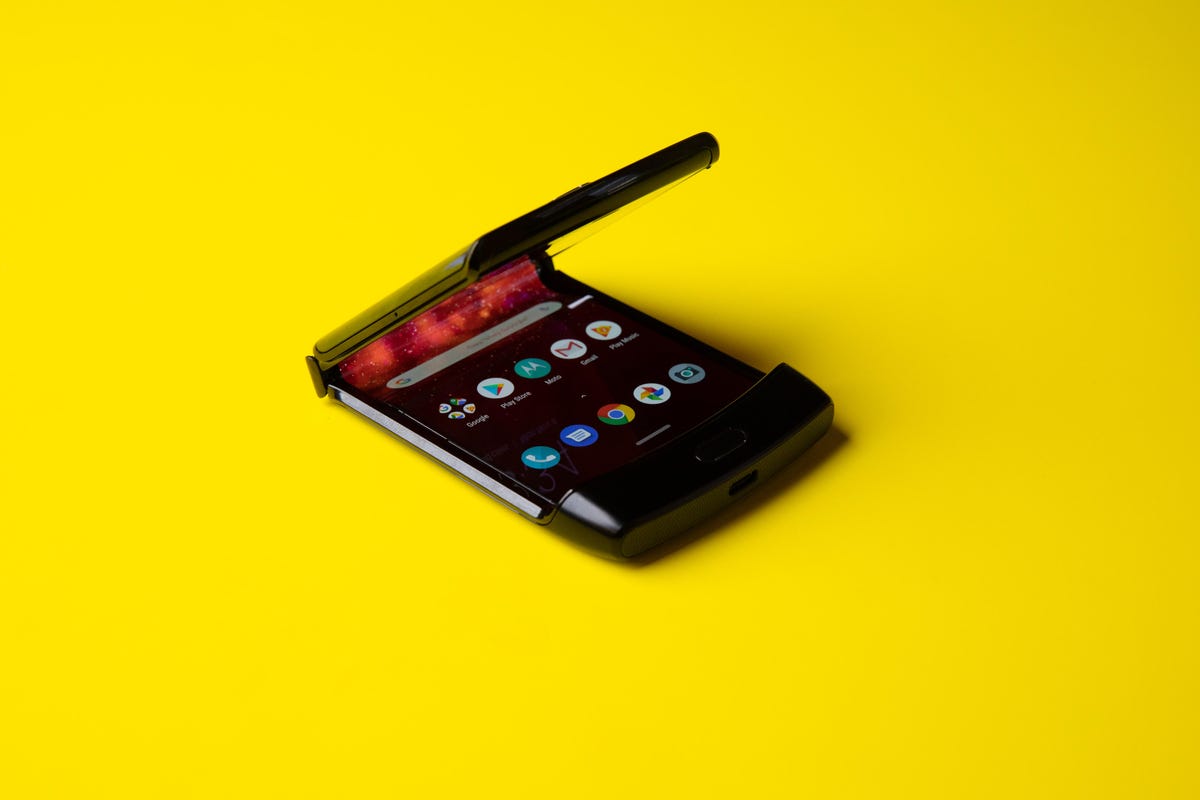

The new Razr: Still thin, but foldable
James Martin/CNET
But it may be too early to write off foldables — and the new Razr.
As I’ve written before, I initially failed to grasp just how popular the original Razr would be. It was only when I held it in my hands that I realized how innovative it was — an unbelievably thin design that we’d never seen before. Motorola showed how small a flip phone could be with the Startac eight years earlier, but the Razr made it even smaller. When it appeared in stores, people queued to buy it — a sure sign that Motorola was cool again.
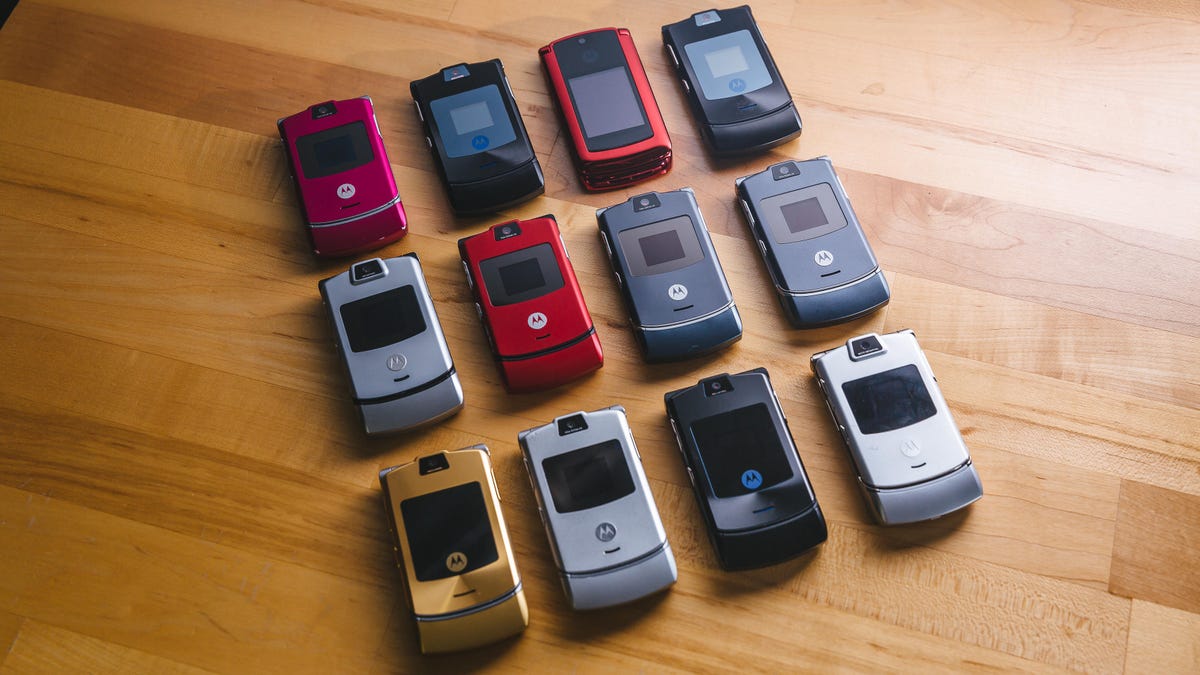

There were quite a few versions and colors of the original Razr.
Tyler Lizenby/CNET
Competitors quickly noticed the thin phone trend and introduced Razr lookalikes. Sanyo (remember that name?) had one of the closest Razr copies with 2006’s Katana. Available in several colors, it also was half an inch thick and had a slippery flat keypad with a “chin” just below. But it was Samsung that went all in on thin, and in multiple forms. Its slim phones ranged from the MM-A900 flip phone to the D900 and U650 sliders to the X820 and T519 candybar designs. Samsung even competed with itself to make the “world’s thinnest phone.” After a while they all blurred into each other and the announcement of another “thinner than ever phone” sparked little buzz.
See also
- Motorola’s new foldable Razr phone is compelling. Here’s why
- Inside Motorola Razr’s foldable makeover
- Motorola’s Razr is a Verizon lifetime exclusive
- See all of our Motorola Razr coverage
Back in a rut
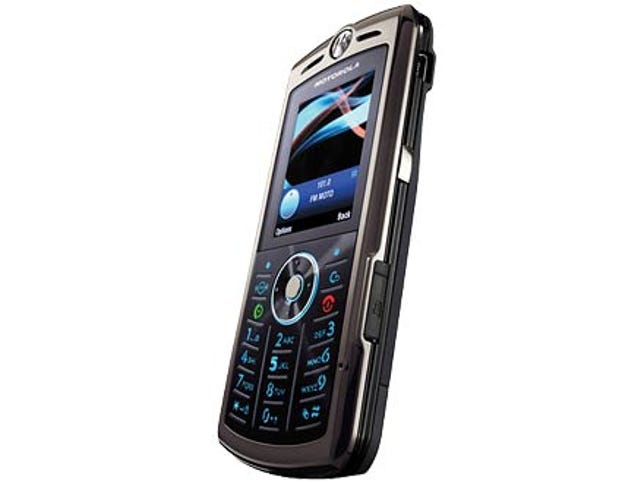

The Slvr L9 looked like a Razr that had been hammered flat.
Motorola
The trouble with a wave of success, though, is that you can only ride it for so long. And that’s just what Motorola did. For a while it seemed to work. The Razr V3 exploded into a full rainbow of colors (a big debate back then was which pink Razr was the real pink Razr), and Moto adapted the thin profile into other designs, each with a vowel-dropping name. There was the Krzr flip phone, candybar Slvr, slider Rizr and several Razr updates like the V3xx and the Razr Maxx Ve (no relation to the Droid Razr Maxx).
Then came Apple.
Just as it did with with so many other things, the first iPhone changed the conversation — suddenly, the phone industry had something else to talk about. Being thin wasn’t enough anymore. Building the best iPhone competitor was now the thing to do.
Motorola, which had spent years working on the Windows Mobile-powered (and thin) Q, was left devastated by the iPhone. While it launched the Droid and a number of other flagship Android phones through a strong partnership with carriers such as Verizon Wireless and AT&T, it never reached the heights of the Razr again.
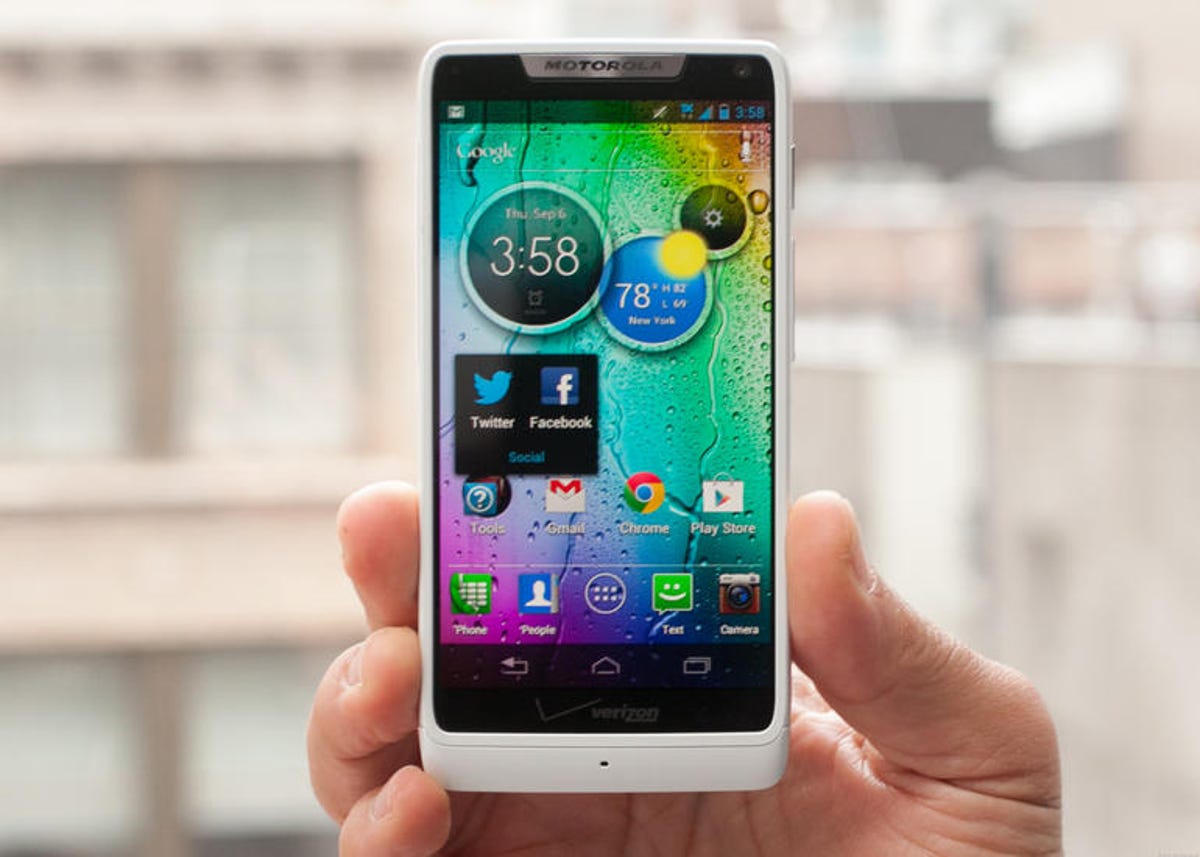

The Droid Razr M was one of Motorola’s Android phones that carried the Razr name.
Sarah Tew/CNET
But even as once-happy owners replaced their Razrs with smartphones, the Razr left an enduring legacy. It wasn’t just that Moto applied the Razr name to a series of Android phones including the Droid Razr and Droid Razr Maxx. More subtly, thin designs continued, even as phones grew larger. Consider that 2007’s iPhone was a hair’s breadth thinner than the Razr. But that spec was more of a footnote than a highlighted feature (the massive Samsung Galaxy Note 10 is even slimmer).
So next time you’re sliding your slim phone into your pocket, remember how Motorola first flattened the road 15 years ago.
The post How the first Razr made Motorola cool again first appeared on Joggingvideo.com.
]]>The post Clean your phone while charging it with Lexon’s Oblio first appeared on Joggingvideo.com.
]]>
MWC 2019 is (mostly) about phones, so it makes sense that the show also has plenty of phone accessories. Cases, headsets and Bluetooth speakers are typical fare, but there’s more to see around Barcelona. Take the Lexon Oblio, which I found at a press event the night the show opened.
Appealingly shaped like a minimalist vase, the Oblio doesn’t just charge your phone, it also sanitizes the display with purple UV light. So the Oblio will work while you sleep to give you a clean and fully charged phone by morning. It uses a USB Type-C power cable and is Qi-certified.
I just saw the white version, but you can also buy the Oblio in gold and dark blue. Creator Lexon, a French company that makes wireless chargers, speakers and external batteries, did not disclose a price.
The post Clean your phone while charging it with Lexon’s Oblio first appeared on Joggingvideo.com.
]]>